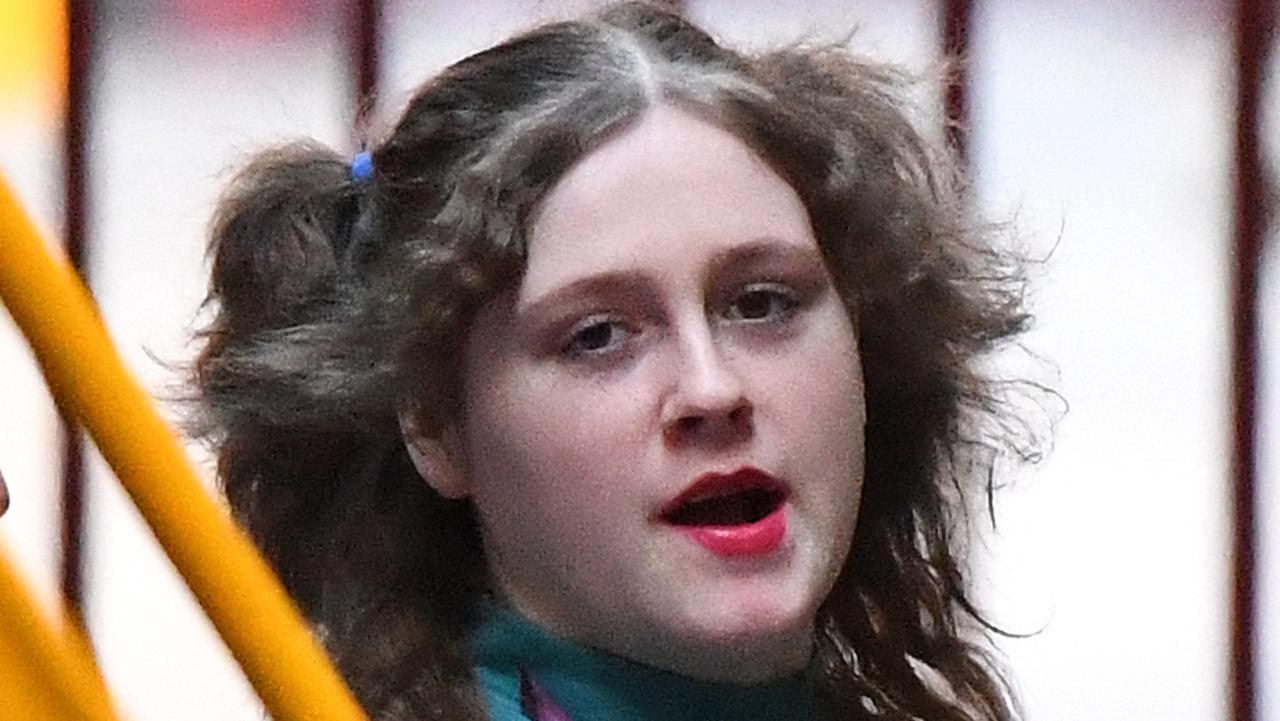World’s biggest ecstasy bust: How a Google search foiled Aussie tomato tin mafia’s drug plots
BIG READ: HOW the Aussie Mr Bigs behind the world’s biggest ecstasy haul and $13b drug plot were busted. Video: The surveillance tapes
True Crime Scene
Don't miss out on the headlines from True Crime Scene. Followed categories will be added to My News.
IT’S difficult to imagine that of all the hugely populated cities around the globe, it is little old Melbourne which holds the title of the site of the world’s biggest ecstasy bust.
Yet it has held that distinction twice, with the first world’s biggest ecstasy bust of 1.2 tonnes being made here in 2005. That record was eclipsed when Australian Federal Police agents seized 4.4 tonnes of ecstasy pills in Melbourne in 2007.
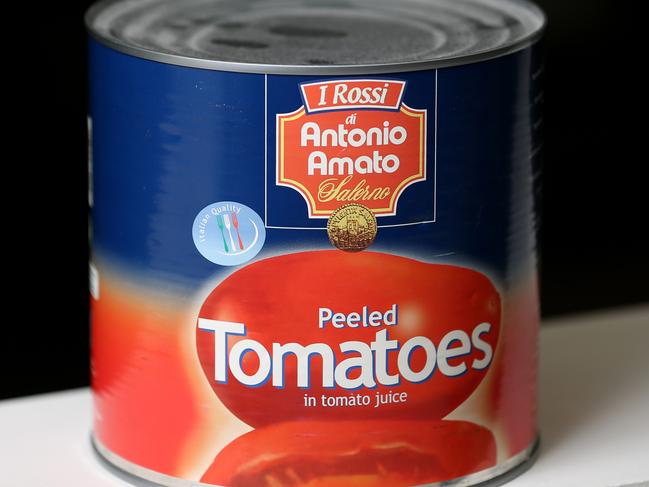
There are two main reasons such massive amounts of ecstasy were shipped to Melbourne. The first is Australia has very strong Calabrian mafia cells in Melbourne and elsewhere and the Italian organised crime gang is one of the world’s biggest traffickers of ecstasy.
Secondly, Australians are wealthy enough to pay the world’s highest prices for ecstasy tablets — making it an attractive place to smuggle to.
Court suppression orders lifted yesterday enable the Herald Sun to reveal the inside story of the world’s biggest ecstasy bust, which involved 15 million pills hidden inside tomato tins which were shipped by the Calabrian mafia from Italy to the Melbourne docks.
This is the inside story of the world’s biggest ecstasy bust and how those responsible for importing 4.4 tonnes of ecstasy into Melbourne from Italy were brought to justice.
Tomato tin mafia man planned $13 billion drug cook
A POLICE sting foiled Mokbel mate Rob Karam’s plan to buy 26 tonnes of chemicals to make ice with a street value of $13 billion.
Karam — one of Crown casino’s top 200 gamblers — was secretly recorded as he arranged to ship the chemicals to Australia and Mexico.
What Karam didn’t know was the man in Hong Kong he was negotiating the massive deal with was an undercover officer working with Australian Federal Police.
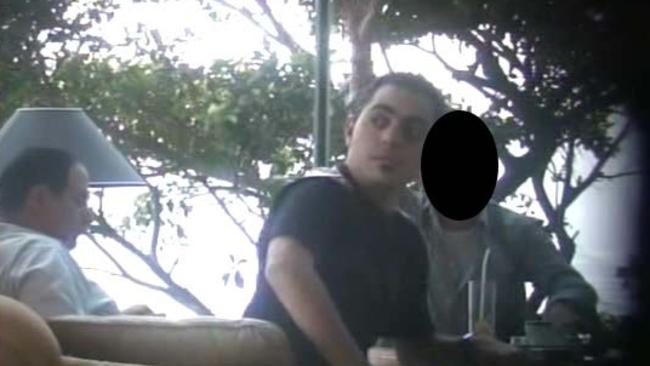
For the first time, the Herald Sun can also reveal details today of other mind-blowingly large drug deals and the Australian Mr Bigs who are behind bars because of them.
It can do so following the lifting yesterday of multiple Supreme and County Court suppression orders.
That enables the Herald Sun to tell the full inside story on the world’s biggest ecstasy bust, which involved the AFP seizing 15 million pills hidden in tomato tins shipped from Italy to Melbourne by the Calabrian mafia.
Court suppression orders lifted yesterday also enable the Herald Sun to reveal new details about the world’s biggest ecstasy bust, which involved the AFP seizing 15 million pills hidden in tomato tins shipped from Italy to Melbourne by the Calabrian mafia.

See the video surveillance tapes that brought down the huge drugs syndicate above
Those details include:
MORE than 30 gang members have been convicted and jailed by Victorian courts for a total of almost 300 years following the 2007 seizure of the 4.4 tonnes of ecstasy - which had a street value of $440 million.
SENIOR gang members were secretly taped plotting to murder the man they blamed for the 4.4 tonne shipment of ecstasy being seized — that man is a mate of underworld identity Mick Gatto.
BLACK Uhlans bikie gang founder John Higgs was secretly recorded saying he wanted to wrap Gatto’s mate in carpet and “throw him in the river” as punishment for the ecstasy shipment being grabbed by police.
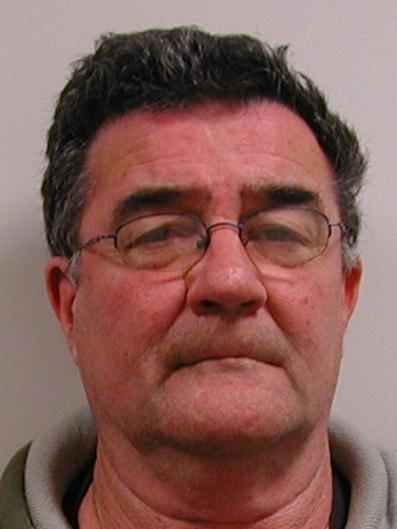
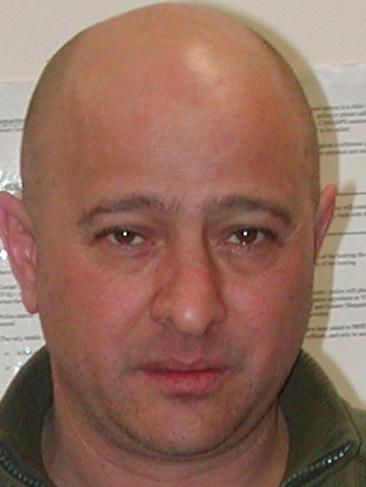
THE drug operation was nearly blown before enough evidence was gathered to charge all those involved as AFP surveillance officers came within seconds of having to reveal themselves to physically stop gang members from murdering a second man they had fallen out with.
THAT intended victim didn’t come out into the Reggio Calabria Club car park in Parkville, where the gang members were waiting, so the execution attempt was aborted without the surveillance officers having to expose themselves.
MELBOURNE-based Calabrian Mafioso Frank Madafferi was a major drug dealer within months of former Federal Minister Amanda Vanstone overturning a decision to deport him.
AFP agents secretly taped Madafferi making death threats after he won his nine-year legal battle to stay in Australia and angrily claiming he was going to chop fellow drug dealer Pino Varallo “into little pieces”.
MADAFFERI was selling drugs provided to him by the Calabrian mafia gang charged by the AFP in 2008 over the world’s biggest ecstasy bust.
PASQUALE Barbaro, the Griffith-based boss of the Calabrian mafia gang behind the 4.4 tonne ecstasy importation, is the son of Francesco “Little Trees” Barbaro, one of the men named in the Woodward royal commission report as being an influential member of the Griffith mafia cell which murdered anti-drug campaigner Donald Mackay in 1977.
BARBARO was secretly bugged by the AFP telling fellow drug dealer Gratian Bran he had just warned Karam he was going to kill him if he didn’t pay what he owed for drugs supplied to him.
CONSPIRACY to murder charges against Barbaro and Madafferi have been dropped.
ONE of Australia’s most wanted men — Graham Potter — will still face trial over his alleged botched attempts to execute two of Barbaro’s enemies for Barbaro, and face trial over his alleged drug trafficking for Barbaro gang members.
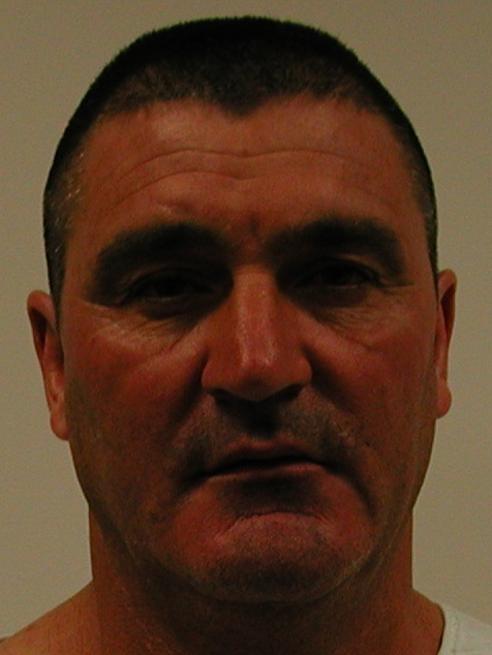


SENIOR Barbaro drug gang member and South Australian Italian organised crime boss Carmelo Falanga fired four shots at police as they raided his meth lab and was found to be in possession of a fully automatic submachine gun and a .357 revolver.
A JOINT police and spy agency taskforce set up by the Australian Crime Commission helped police in Europe arrest 27 members of the Belgian syndicate believed to have made and sold the 4.4 tonnes of ecstasy to the Italy-based Calabrian mafia cell which shipped the pills from Naples to Barbaro’s gang in Melbourne.
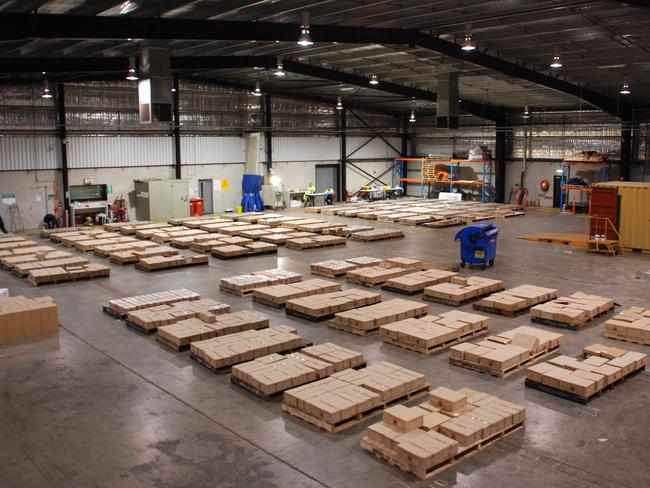
KARAM — who was convicted drug boss Tony Mokbel’s shipping industry inside man — was on bail and on trial over the previous world record seizure in Melbourne of 1.2 tonnes of ecstasy in 2005 at the time he was helping organise the 4.4 tonne importation in 2007.
ORGANISED crime gangs in Mexico were lined up by Karam to receive 20 tonnes of chemicals from China to turn into ice for probable sale in Australia.
KARAM ordered a further six tonnes of ice-making chemicals to be shipped directly to Melbourne.
Calabria, in the toe of southern Italy, is the world headquarters of the Italian organised crime gang ‘Ndrangheta.
It is simply called the mafia by most in Australia, or the Calabrian mafia to differentiate it from the Sicilian mafia.
Details of Karam’s sentencing and involvement in the Calabrian mafia’s 4.4 tonne ecstasy importation in 2007, a 150kg shipment of cocaine in 2008 and his plan to import tonnes of drug making chemicals into Australia were suppressed until yesterday.
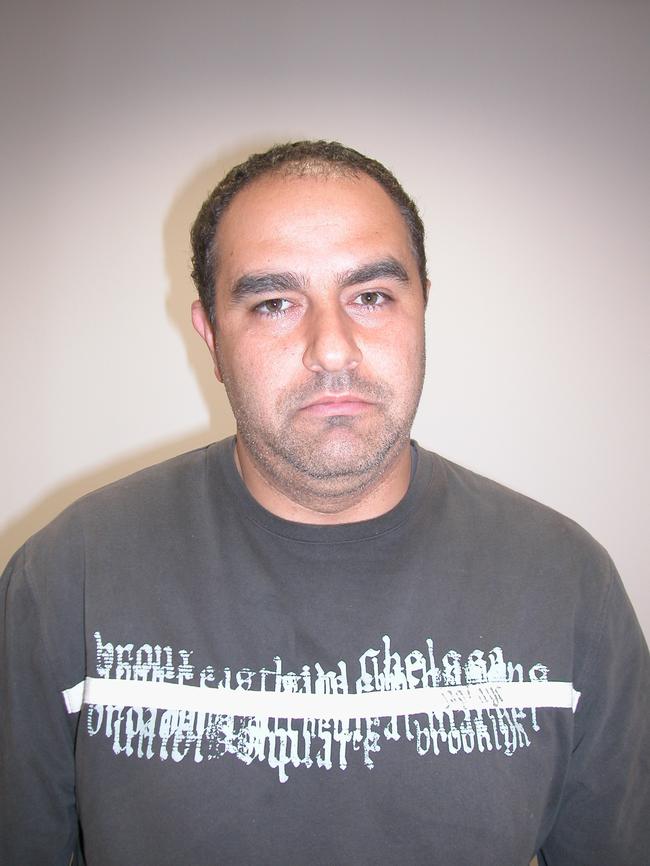
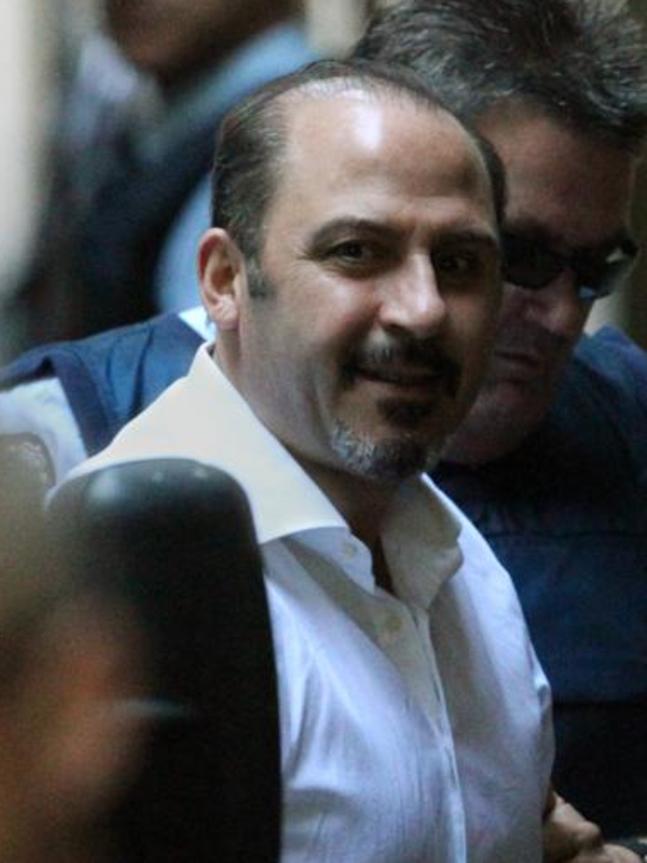
Karam, 48, of Derby St, Kew, was jailed for 19 years and ordered to serve a minimum of 15 over his major role in the 4.4 tonne ecstasy importation.
He is awaiting sentencing over other drug charges he was convicted of in November last year.
Karam’s final trial over the planned ice importation was discontinued last month to save the cost of another trial. A guilty verdict in that trial would probably not have resulted in his sentence being increased by much.
The 19-year jail term ends his charmed life of beating drug charges.
Karam was arrested with Mokbel in 2001 and charged over the importation of 550kg of ephedrine, which could make amphetamines worth $2 billion.
He was also charged in 2001 over a three tonne hashish shipment worth $147 million, which Victoria Police believe was organised and financed by Mokbel in partnership with murdered underworld heavyweights Lewis Moran and Graham “The Munster” Kinniburgh.
The trafficking and possession charges against Lebanese-born Karam over the ephedrine seizure were dropped in 2005 and he was found not guilty over the three tonne hash haul.

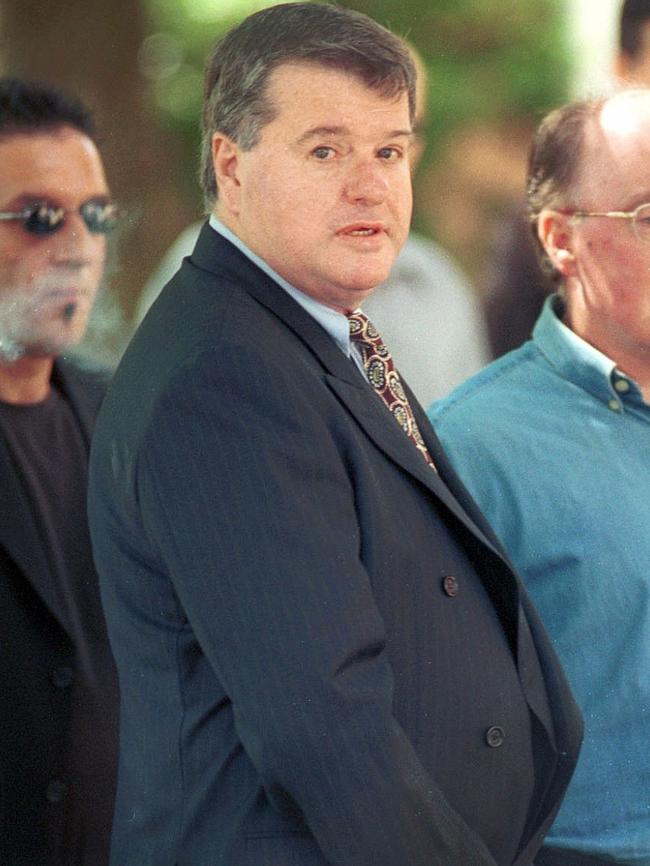
Karam was also cleared of conspiring with others to import five million ecstasy tablets into Melbourne in 2005.
The Herald Sun became aware through Italian police contacts in early 2007 that the Calabrian mafia was involved in shipping huge amounts of ecstasy to Melbourne.
It agreed to an AFP request not to reveal the Calabrian mafia connection to either the first 1.2 tonne shipment or the second 4.4 tonne one.
The AFP feared publicising the Calabrian connection would tip off the Italians that they were under investigation as the prime suspects.
Now that all the court cases are over and the suppression orders have been lifted the Herald Sun is able to reveal details of the two world’s biggest ecstasy busts for the first time without jeopardising any investigations.

Evidence suggests the 1.2 tonne shipment was going to be distributed partly through Victoria’s fruit and vegetable industry, which has a strong Calabrian mafia presence.
When the AFP swooped as the gang members were unloading the 1.2 tonne ecstasy shipment in 2005 they found the pills were being repacked into hundreds of the type of lettuce boxes used in Victorian markets.
How a Google search brought the whole game unstuck
The 2007 world’s biggest ecstasy bust wouldn’t have been anywhere near as successful if a female freight forwarding manager in Melbourne had done what the crooks expected would happen after the container was unloaded.
It’s likely those arrested over the 4.4 tonne shipment would have been the lowly labourers sent by the Barbaro gang to pick up and unpack the pills.
But luck was with AFP that day in 2007.
The manager not doing as expected enabled the AFP to later charge 33 people and dismantle one of Australia’s biggest drug syndicates.

In what was one of the largest AFP operation ever, gang members were watched by surveillance officers for 10,000 hours, 185,215 telephone conversations between gang members were secretly recorded and AFP agents and prosecutors put in 287,000 hours of work to crush the syndicate.
All that might not have happened had the freight forwarding manager in Melbourne done as the syndicate expected.
It was that manager’s job to ring a Melbourne company, which her paperwork said had imported a container load of tomato tins from Italy, to let them know it was ready for collection.
While the company was legitimate — and had no idea its name was being used by criminals to import 15 million ecstasy tablets — the phone number on the fake documents was linked to the drug syndicate.

Had the manager rung that number a gang member would have answered, pretended to be from the legitimate company and arranged for the container to be picked up without the company ever knowing its name had been used.
What neither the manager nor the crooks knew at that stage was that Customs had checked the container on arrival, discovered the ecstasy and alerted the AFP.
The AFP would have followed the container after it was picked up and would have swooped on whoever started unpacking it.
It’s more than likely those doing the unloading would be way down in the gang hierarchy.
If those criminal underlings didn’t dob in those above them — and people who inform on the Calabrian mafia often have very short lives — then the Mr Bigs responsible for organising the massive ecstasy shipment could easily have escaped detection.
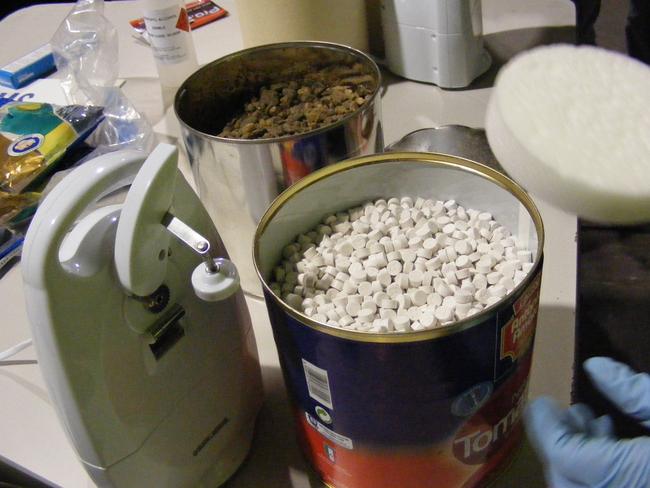
So while the AFP was always going to get the 15 million pills and some arrests, it might never have got the drug bosses.
That one manager in the Melbourne freight forwarding company office changed the course of the investigation by doing something totally unexpected.
Instead of reading the paperwork to get the phone number of the company which had supposedly imported the tomatoes, she Googled its name and rang the number on her computer screen rather than the number on the fake paperwork.

That meant she got through to the real company rather than the crooks.
Alarm bells started to ring when the company denied it had imported any tomatoes.
The manager needed to return the container and as the company she contacted said the tomatoes didn’t belong to it she arranged for the container to be unloaded so the empty container could be returned for re-use while she arranged storage for the tomatoes.
As the AFP was watching the container it had no choice but to move once it started being emptied by unsuspecting staff from the legitimate freight forwarding company.
As it turned the freight forwarding company manager did the AFP a favour by accidentally ringing the legitimate company.
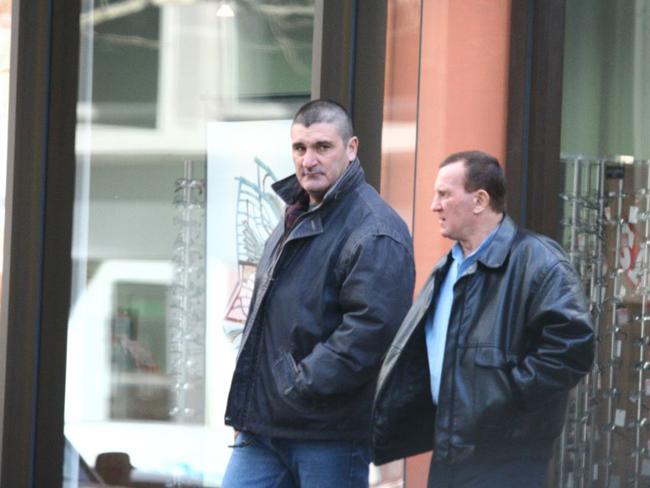
Doing so meant the AFP ended up being able to arrest far more senior members of the gang than it would have had she rung the crooks.
It was efforts by the criminals to find out if the container had been seized — and subsequent drug deals to raise money to pay a $10 million debt owed to a European organised crime gang for the lost drugs — that led to them being careless and saying and doing things they normally wouldn’t have done, all under the watchful eyes and ears of the AFP.
Cops twig to a ‘drug shipment gone wrong’
Conversations secretly taped by police revealed the Barbaro gang remained hopeful of obtaining the 15 million pills for months after the container arrived in Melbourne on June 28, 2007, while suspecting, but not being sure, that the ecstasy had been seized.
Most of the evidence which led to the 33 people being charged was obtained in the months after the 15 million ecstasy pills were seized, with arrests not being made over the 4.4 tonne shipment until 13 months after the container arrived in Melbourne.
That evidence included the AFP capturing text messages in which Calabrian mafia boss Pasquale Barbaro attempted to persuade a Melbourne newspaper journalist to start asking the AFP questions about the ecstasy container to try to find out if it had been seized.
Barbaro, 53, of Whites Rd, Tharbogang, near Griffith, New South Wales, wanted the journalist to establish whether police had the drugs.
If they hadn’t seized them then he was going to send his minions to collect the container and unload it.
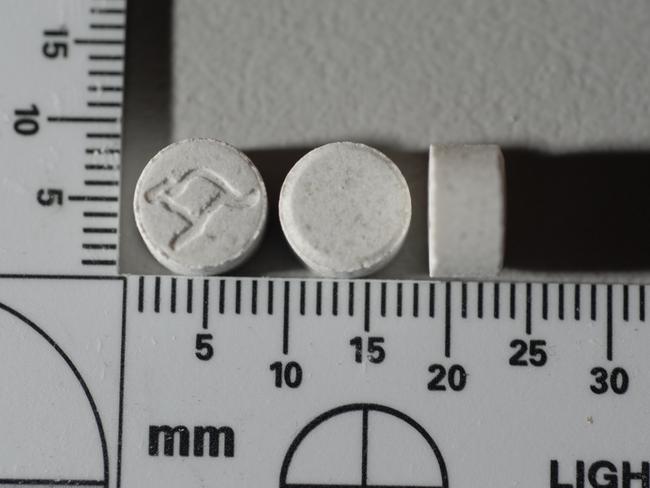
If the journalist was able to establish the container had been seized then Barbaro wanted him to write an article saying so as publicity about the seizure would convince the European drug gang which supplied the ecstasy that the Aussie crooks hadn’t ripped them off and stolen the drugs without paying for them.
Text messages between the journalist and Barbaro provided vital evidence linking Barbaro to the container in which the 15 million ecstasy tablets had been hidden.
The Supreme Court judge who jailed Barbaro for a minimum of 30 years in 2012 made reference to Barbaro’s attempted use of the journalist.
“You were understandably concerned that the seizure of the container had not been made public,” Justice Betty King told Barbaro.
“To ensure that your European suppliers understood that you were not trying to steal the ecstasy tablets, or as it is colloquially known, ‘rip them off’ — you attempted to try to have the seizure made public.”
Justice King told the court Barbaro contacted the journalist on a number of occasions asking if he was aware of the seizure “and giving details that could be known only to those who had a complete awareness of the container and its contents, including the size of the shipment”.
“You were attempting to ensure that those to whom you were responsible for this payment overseas were fully aware that the shipment had been seized by law enforcement authorities,” Justice King told Barbaro.
On September 19, 2007, several weeks after the 4.4 tonne ecstasy shipment was seized, Barbaro sent a text to the Melbourne journalist.
It said: “Mate, I have info on a drug shipment gone wrong, will u chase it up as I’m afraid to tell police of fear they might be involved. The container number is medu 1250218 and it came in on the ship monica 2 months ago and it is 15 million ecstasy tabs in tomato tins. Why isn’t it out, it’s the biggest in history.”
Although the journalist provided no help to Barbaro, the Mafioso heavy was able to use corrupt sources on Melbourne’s docks to eventually confirm the ecstasy was almost certainly in the hands of the AFP.
It then became Barbaro’s responsibility to send $10 million in cash to the European syndicate to cover the loss.
He and his fellow gang members needed to keep drug dealing to get that $10 million and the AFP watched and listened as they did.
While some arrests were always going to be made once the 4.4 tonnes was seized in 2007, the sequence of events could easily have followed the path of the previous world’s biggest ecstasy bust — which was also in Melbourne.

That case involved the importation of five million ecstasy tablets hidden in a container of tiles which arrived on Melbourne docks from Italy in 2005.
The AFP did then what it did later in 2007 with the 4.4 tonne seizure, they took out the ecstasy tablets and replaced them with fake pills and watched to see who picked up the container and then followed the container to see who unpacked it.
While they charged six men over the 2005 bust they only got convictions against the lowly labourers who had been paid by the gang to unload the ecstasy.
Among those acquitted over the 2005 world’s biggest ecstasy bust was drug boss Tony Mokbel’s mate Rob Karam.
Karam wasn’t so lucky over the next world’s biggest ecstasy bust in 2007. He was one of the 32 people so far convicted in connection with the 4.4 tonne ecstasy shipment.
Bugged conversations suggest that some of the players convicted over the 4.4 tonne shipment were also involved in the earlier 1.2 tonne ecstasy shipment, including Pasquale Barbaro.
The major players got away with that one because AFP agents had to swoop as soon as the 1.2 tonne shipment started being unloaded so as to avoid the loss of physical evidence — but in doing so they were limited to arresting only the minor players involved in unpacking the container.
Those further up the criminal food chain — like Barbaro — traditionally stay several steps removed from the actual drugs so as to avoid detection.
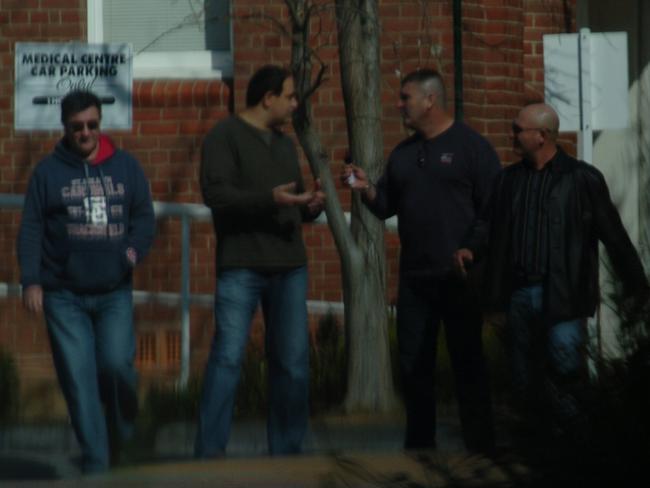
But after Barbaro lost the 4.4 tonne shipment in 2007 he and other senior gang members, in their desperation to earn the $10 million they needed to quickly pay their debt to the European organised crime syndicate, became much more hands on.
They talked more on telephones, had more face to face meetings and physically handled drugs — providing crucial evidence for the AFP as they did so.
Barbaro was caught on tape telling a fellow gang member he was doing things that he hadn’t done since he was learning the criminal ropes as a teenager.
The container containing the 4.4 tonnes of ecstasy arrived in Melbourne aboard the MV Monica on June 28, 2007, after having left Naples on May 25.
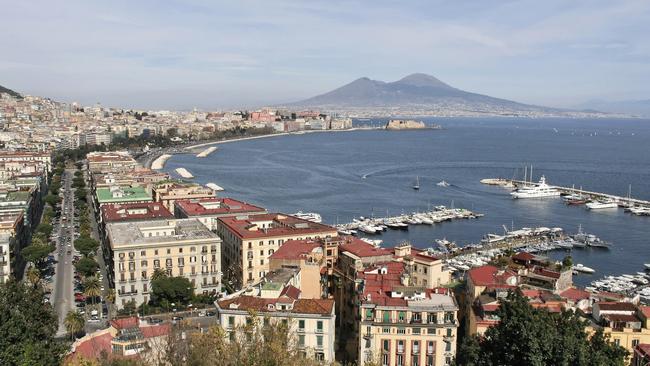
It was addressed to a legitimate Melbourne food importing company, which had no idea the gang was using fake documents to make it look as though it had ordered the tomatoes.
Those fake documents included the phone number the freight forwarding company was supposed to ring once the container had cleared Customs.
That number was connected to the drug syndicate. The plan was that once the number was called the gang would arrange pick-up and delivery of the container.
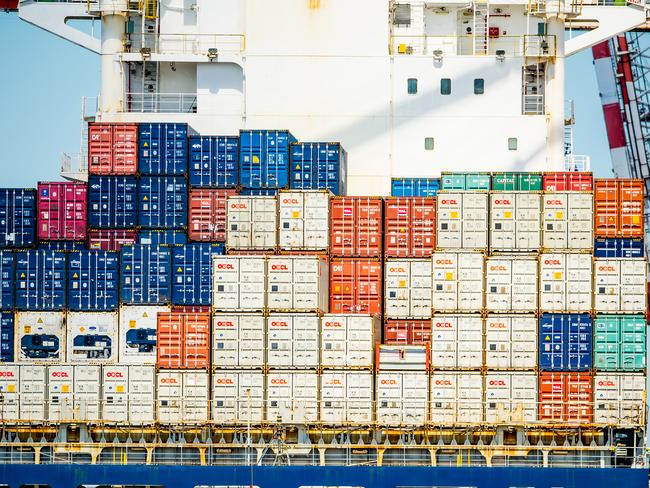
The Melbourne-based food importer was chosen by the gang because it was a company which did import food from Europe, making it less likely a container addressed to it would be considered suspicious and subjected to a search by Customs in Melbourne.
Karam, using his knowledge as a former shipping freight forwarder, was probably responsible for choosing which company to use and arranging the false paperwork.
As mentioned earlier, the freight forwarding company in Melbourne didn’t ring the crooks so the crooks started to panic and make frantic attempts to try to find out what had happened to the container they knew had arrived.
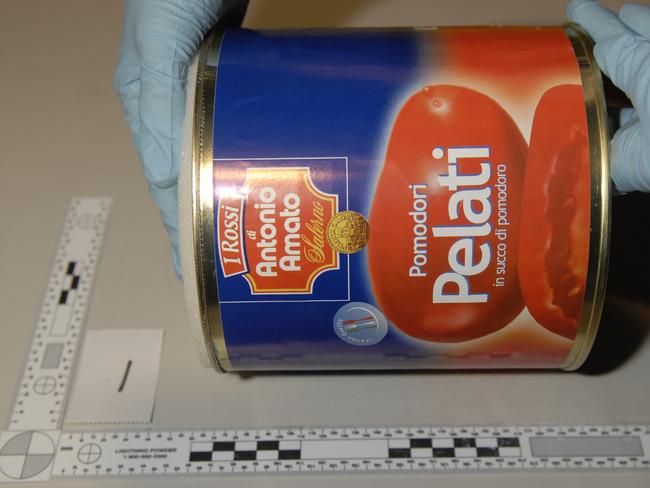
While neither the AFP nor Customs were aware of a specific container of drugs, they had intelligence provided by a number of overseas agencies that a shipment of drugs was thought to have left Europe for Melbourne.
That led to Customs singling out a large number of containers to be searched.
They struck gold when they opened up container MEDU1250218 and cut the top off one of the sealed tomato tins to find it full of ecstasy tablets stamped with various logos, including a kangaroo.
The AFP was alerted and the mammoth job of opening up 607 boxes containing 3642 tins, removing the contents and repacking them with fake drugs began — with the intention of then watching the container and allowing it to be picked up and delivered so they could nab whoever did so.
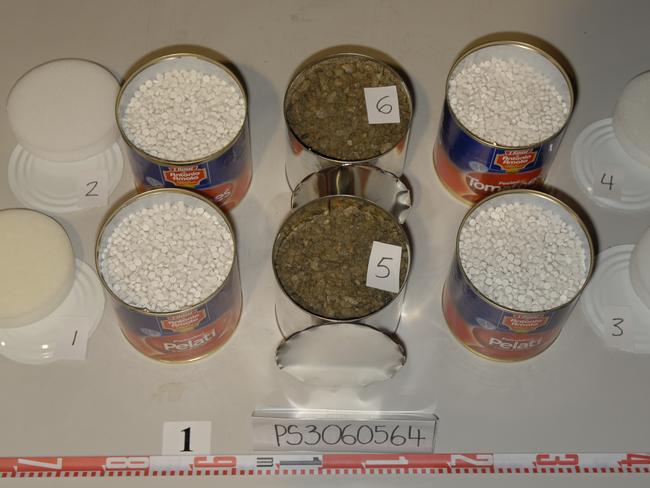
The pills had been professionally packed, probably at a cannery in Italy. Some of the tins actually contained tomatoes, others were packed with gravel and 3034 of them were full of ecstasy pills. The tins of gravel were included so the total weight of the consignment would match what a genuine shipment of 3642 tins of tomatoes would weigh.
The total number of ecstasy tablets packed into the tomato tins was 15,193,798 and they weighed 4.423 tonnes.
AFP agents involved in the unpacking were stunned at the size of the bust — as was the then AFP Commissioner, Mick Keelty, when he got the phone call telling him his Melbourne agents had just made the world’s biggest ecstasy bust.
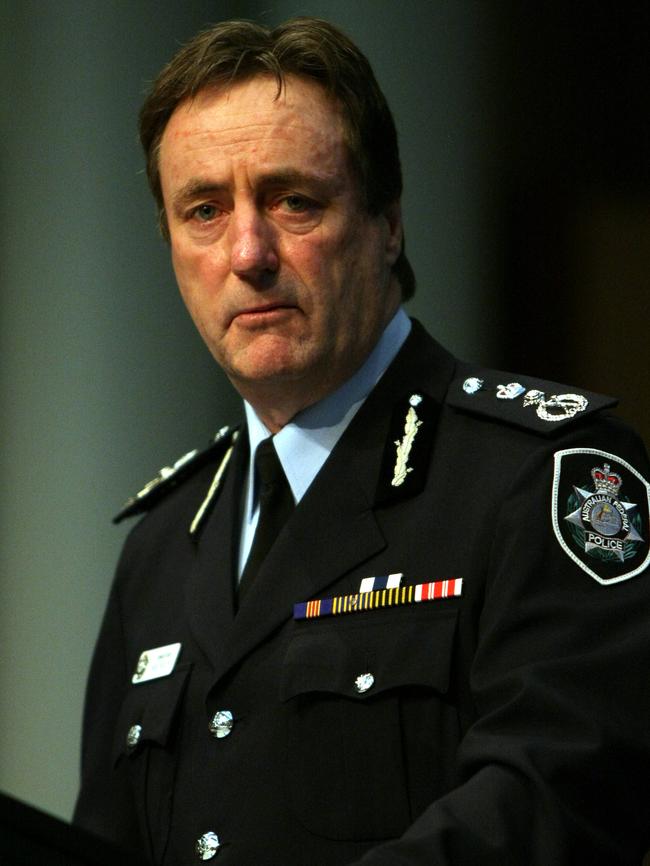
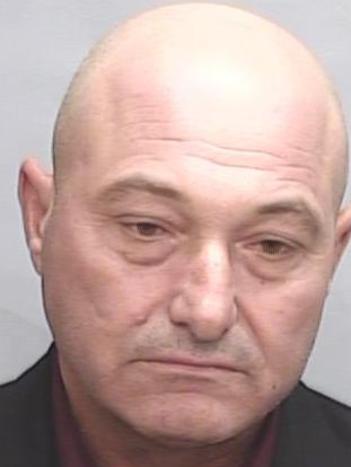
They knew, just about for certain, that Karam would be involved, as would Barbaro.
Phone taps and physical surveillance of them led to others in the group being identified.
The AFP knew Barbaro and his cousin and right-hand man, Saverio Zirilli, had travelled from Griffith and booked into Melbourne’s Pacific International Suites in Little Bourke St, shortly before the ecstasy container was due to arrive.
Senior South Australian mafia figure Carmelo Falanga also travelled to Melbourne at the same time.
The three Mafioso had regular meeting with Karam and Higgs in coming days as they tried to find out if it was safe to pick up the 4.4 tonnes of ecstasy.
There were tense days in the Pacific International Suites as they waited for news.
AFP agents sensed the tension as they monitored every conversation in the room the crooks were sharing.

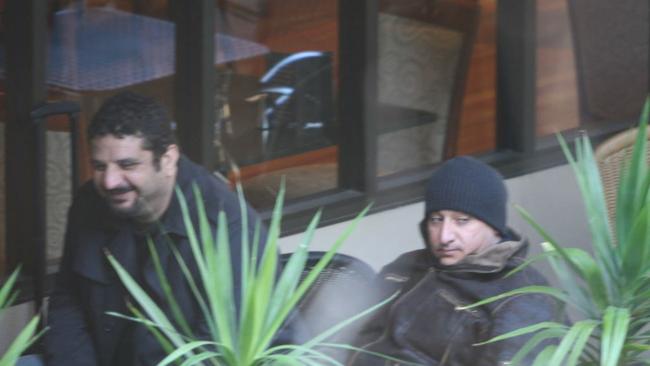
Higgs’s lack of mobile phone knowledge resulted in some short-lived jubilation that the container had arrived, hadn’t been seized and was safe to collect.
On July 4, 2007, several days after the container was unloaded at the Melbourne docks, Higgs sent a cryptic, yet optimistic, early morning text to Barbaro and Falanga.
Barbaro was heard in the bugged hotel room to say Higgs’s message was the best news for “a f…ing long time”.
Higgs claimed that he needed to “come back to earth”; such was his level of excitement at receiving the text.
The cause for Higgs’s optimism was only fully revealed that afternoon.
Higgs joined Zirilli and Griffith-based Barbaro gang member Pasquale Sergi in room 609 at the Pacific International and told them he had received a text message overnight saying “delivery successful”.
Higgs wrongly concluded the sender was Karam, whose job it was to find out if the pills had arrived and whether or not they had been detected by Customs or police.
The message led to Higgs concluding the much awaited clearance enabling safe access to the container and its drugs had been confirmed by Karam and it was that “green light” message that Higgs had earlier conveyed to Barbaro.
As the AFP listened to Higgs telling Zirilli and Sergi (Barbaro was out at the time) about the text message they could tell Zirilli and Higgs were extremely buoyant, with Zirilli describing the news as “beautiful”, but Sergi initially remained silent.
Zirilli spoke about setting in train the next phase, getting two gang underlings to take a truck to pick up the ecstasy-filled container, possibly as early as the following morning.
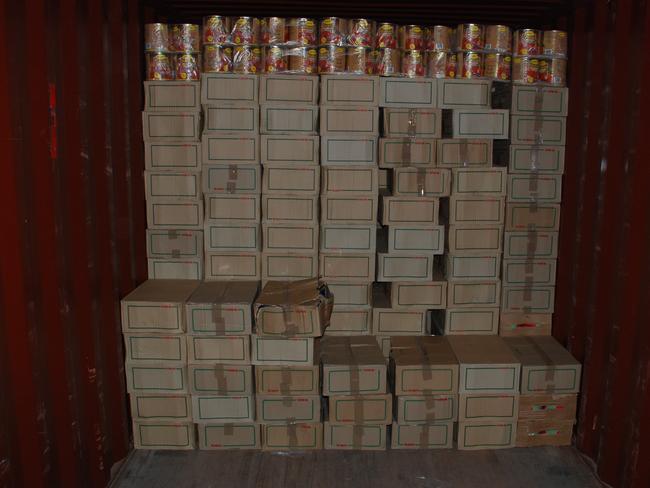
An excited Higgs was heard talking about persons emptying the container and the gang finally getting their hands on the drugs.
At this point, Sergi, a man more versed in text messaging than Higgs, proffered his unpopular opinion regarding the source of the message Barbaro, Zirilli and Higgs were getting so positively worked up about.
He suggested the message had not been sent by Karam but that it was merely a service provider auto-generated message confirming the successful delivery of an earlier text sent by Higgs to Karam.
Sergi’s theory was initially discounted by Higgs and Zirilli.
It was ultimately accepted as being correct — but only after Higgs met Karam that night and established the “delivery successful” text was indeed from the phone provider and not Karam and it related to the successful delivery of a text message and not the successful delivery of 15 million ecstasy tablets.
That was one of the stuff-ups by syndicate members that prompted senior gang member Jan Visser to come up with one a one-liner that caused much laughter among the AFP agents who were secretly listening to his conversations.
“It’s hard to fly like an eagle when you’re surrounded by turkeys,” Visser was recorded saying.
The bugged conversations recorded in room 609 by the AFP provided valuable evidence as to who was connected to the 4.4 tonne ecstasy shipment.
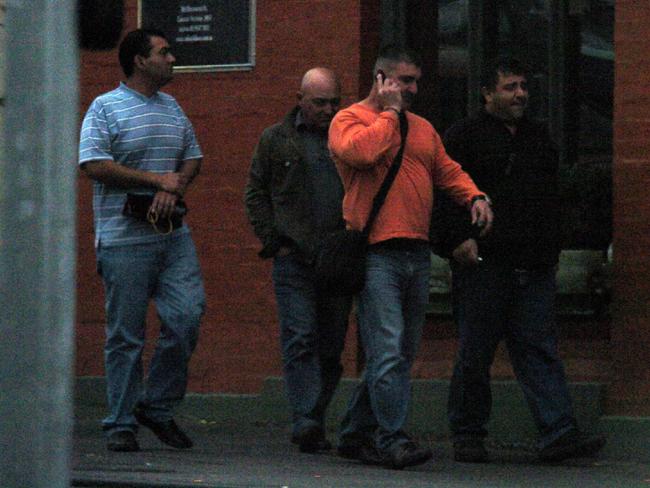
Telling the mafia big boys the bad news
It wasn’t until July 14, 2007, that Barbaro decided to prepare to tell his Calabrian mafia bosses in Italy the bad news that it appeared the ecstasy had been seized.
He flew to Calabria on July 21, after being secretly recorded saying he needed “to lick their wounds”. While he was in Italy he spoke to Zirilli in calls intercepted by the AFP.
Barbaro told Zirilli he had been copping “the heat, right left and centre”.
In a later call to Zirilli, Barbaro said the suppliers of the ecstasy in Italy were all “starving here, and I’m to blame”.
Barbaro came back to Australia after a month with the news that if the 4.4 tonnes of ecstasy was lost then he and fellow drug importation financier Falanga each had to send $5 million to the European syndicate to compensate for the loss.
A flurry of drug activity by Barbaro and his gang in the following months to get money to pay that debt provided yet more evidence for the AFP, with two breakthroughs in particular providing a mountain of vital information.
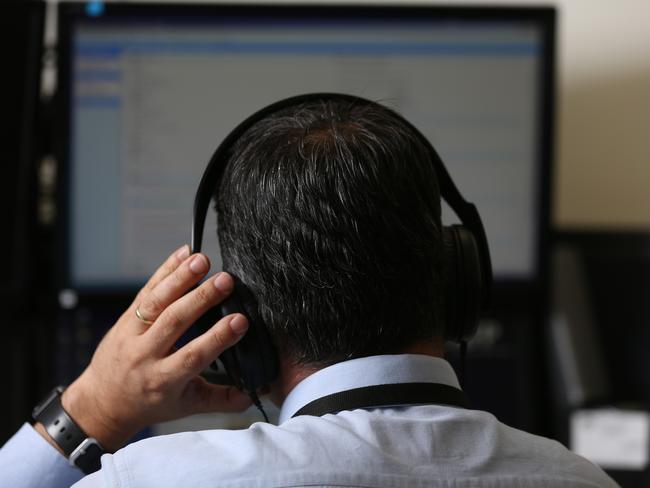
The first was when Griffith-based Barbaro, 53, decided he was spending so much time in Melbourne that it made sense to rent a property.
The married father of four got his Melbourne mistress, Sharon Ropa, who was 37 when she was arrested in 2008, to rent a unit in Little Palmerston St, Carlton.
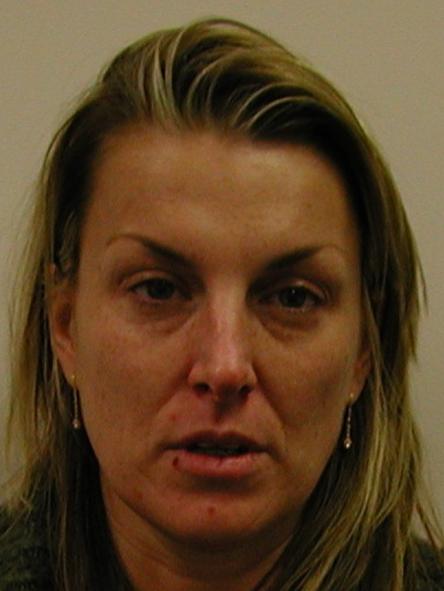
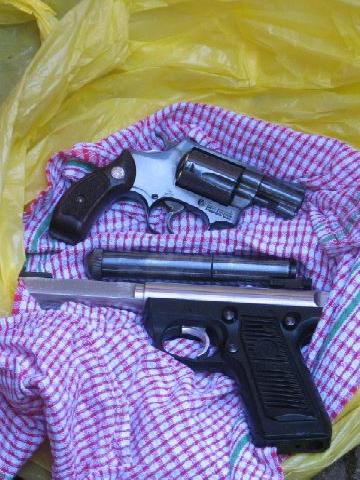
It became Barbaro and Ropa’s love nest, as well as an office, a meeting place for fellow gang members and a source of evidence for the AFP.
The AFP secretly installed cameras and listening devices in the apartment and what they captured proved crucial to convicting those involved in the ecstasy importation, other drug dealing and money laundering offences.
So much cash was being brought into the apartment that Ropa bought a money counting machine, which the AFP got footage of her using.
One good piece of evidence was obtained when the AFP raided the property about 4am on August 8, 2008.
On the bedside table next to the bed Barbaro and a naked Ropa were sharing at the time was a piece of paper with the number of the container containing the 150kg of cocaine written on it.
Also seized by police from the love nest were more than 2500 ecstasy tablets, 30 mobile phones, $181,000 in cash and several notebooks outlining payments made for drugs. They also discovered guns buried in the back garden.
The second breakthrough was when AFP agents picked up from various bugged conversations that several of the leading players were planning to meet at the George Graham Park at Wunghnu, near Shepparton, on April 16, 2008.
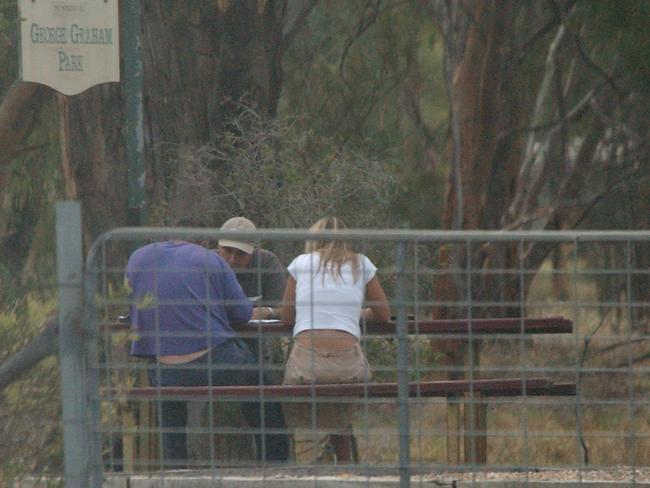
Each of the gang members was very careful when talking and texting over the many mobile phones they used, making it difficult to use what they often said in code as evidence against them.
What the AFP was hoping was the gang members would feel much safer talking openly about their drug operations while sitting at a bench table in a remote park 204km north of Melbourne.
What the crooks didn’t know was the AFP quickly arranged to be able to listen to what was said in the park.
Conversations were captured between Barbaro, senior Barbaro gang member Gratian Bran and Mr X, who can’t be identified but who is a member of the European gang who was sent to Australia to ensure the Barbaro syndicate paid the $10 million it owed the Calabrian mafia in Italy for the loss of the ecstasy.
The AFP was able to record the following conversation about ecstasy tablets.
BARBARO: “But you told me six thousand.”
MR X: “Yeah, but that’s from the pure MDMA and this is already mixed so that it’s about a hundred, a hundred pills.”
BARBARO: “The ones I bought were already mixed with the binder and everything. I made then thousand out of one kilo”
MR X: “Yeah, from the pure MDMA”
BARBARO: “Fifteen kilos would be …”
BRAN: “That’s half a million dollars. I’ve got seven and a half kilos for $300,000.”
BARBARO: “The ones in Sydney, they were going and I told them I said sell them at, I said, for even $7.50 just to get rid of them. Just sell them just to get the ball over the line, that’s the first 250,000.”
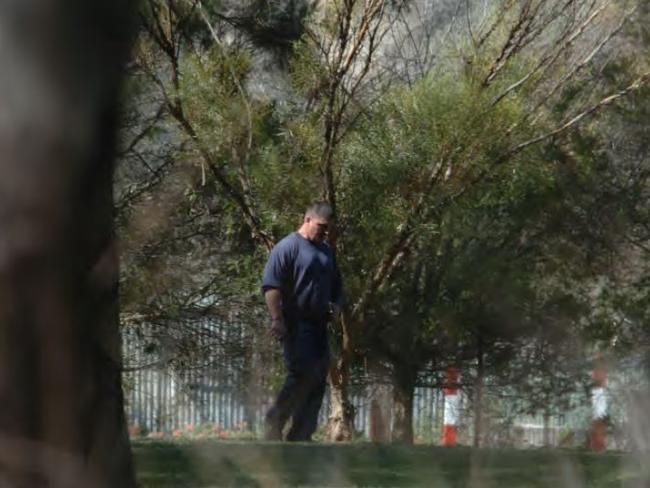
As the three drug dealers sat around a picnic table they talked openly about their criminal activity, much to the delight of the AFP agents secretly monitoring the bugged conversation.
Mr X talked about his recent discussions with the European syndicate which supplied the ecstasy. He said the Europeans were still concerned that money owed by the Barbaro syndicate had not yet been paid.
Barbaro told Mr X that Karam still owed about $600,000 and expressed frustration at Karam’s constant stalling over the debt.

Bran chipped in that Karam should be punished for his conduct and told Mr X and Barbaro he knew people in Melbourne who could assist in recovering the money Karam owed.
Barbaro stated that he had already warned Karam that he would pay at the end of the day “either in money, or with his life.”
Some of those involved in the 4.4 tonne ecstasy importation — including Barbaro and Karam — also imported 150kg of cocaine into Melbourne on July 24, 2008, just a couple of weeks before the AFP made arrests in 2008 in connection with the 2007 ecstasy shipment and subsequent crimes.
They used corrupt dock workers in Panama to put three bags containing the cocaine in with bags of Columbian coffee beans in a container which was on its way to Melbourne.
The plan was to use corrupt dock workers in Melbourne to open the container just after it was unloaded, remove the three bags of cocaine and reseal the container with a genuine seal, which the workers in Panama had placed inside the container with the cocaine.
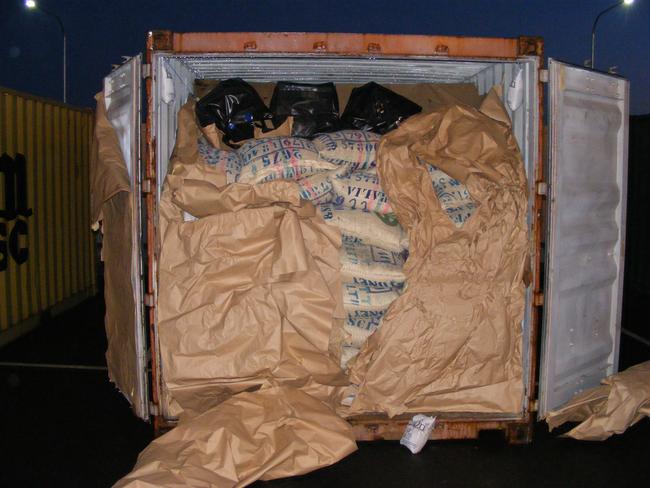
This type of drug smuggling is known as the piggyback method, which involves drugs being placed in a legitimate cargo with the intention of the container being accessed and the drugs removed prior to delivery to the actual legitimate importer of the other goods in the container.
The plan failed as Customs officers picked up irregularities when they X-rayed the container and later found the cocaine during a search.
Karam’s Melbourne dock contacts were so good he knew Customs had found the cocaine within minutes of them discovering it.
He was caught on tape giving Barbaro the bad news and a police surveillance camera hidden in Barbaro’s Carlton apartment recorded Barbaro putting his head in his hands.
Ever the attentive and fawning lover, Sharon Ropa was caught on tape asking Barbaro if he wanted a drink of “water, coke, anything else?”
Barbaro replied: “Coke, we’d love 150kgs of it, but you know you haven’t got it.”
Gang members also had a container of what they thought was 100kg of chemicals to make ice on the way to Melbourne from India at the time arrests were made in August 2008.
It turned out the Indian crooks had ripped them off and the chemicals they sent hidden in furniture were not what the gang had paid for and couldn’t have been used to make illegal drugs.
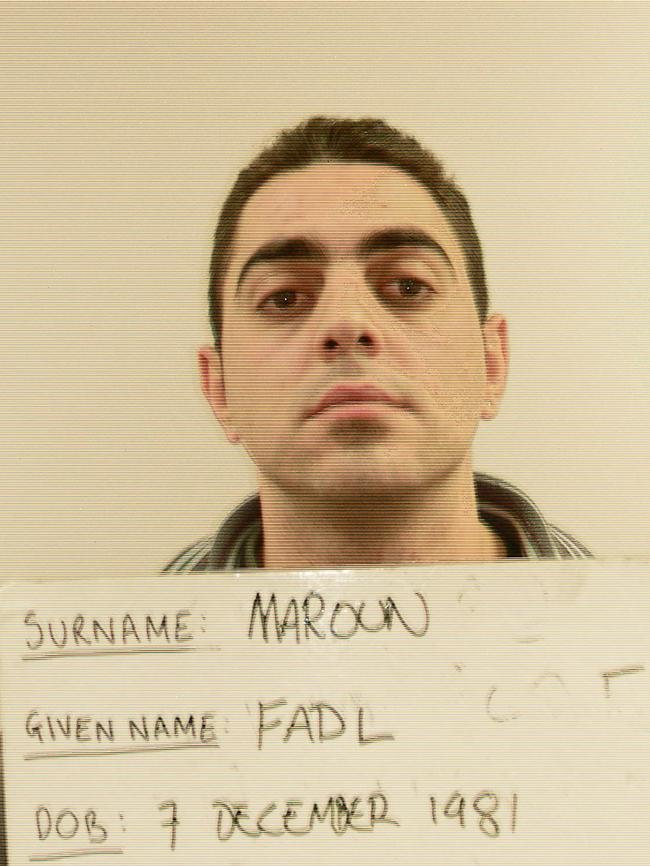
And Karam and fellow gang member Fadl Maroun were well advanced in their plans to buy tonnes of chemicals to ship to Australia and Mexico to be turned into ice.
Karam and Maroun were brought undone by some excellent undercover operatives in Hong Kong and Melbourne.
AFP agents knew from bugged telephone conversations that Karam was keen to buy tonnes of ice-making chemicals.
They set up an elaborate sting, with the help of Hong Kong police, whereby Karam became convinced he was dealing with a senior member of a Chinese organised crime gang with unlimited access to the chemicals needed to make ice.
Karam and Maroun flew to Hong Kong to meet that supposed Mr Big, who was using the name Michael, for the first time on March 13, 2008 and again for subsequent meetings on May 14 and July 2 that year.
Michael was actually an experienced Hong Kong police undercover agent.
Michael met Karam and Maroun at the Whampoa Lounge cafe, in Hong Kong’s Harbour Plaza on each of the three occasions. Every face to face meeting was secretly video and audio taped by police.

Michael was posing as a Chinese crime boss who was interested in getting ecstasy pills from Karam in exchange for supplying Karam with tonnes of drug making chemicals from China.
As a result of the Hong Kong meetings with Michael, arrangements were made for Karam to meet with a female who Michael said was his criminal contact in Melbourne.
That female was an undercover AFP agent who was using the name Rosie during the sting operation.
Two meetings later occurred between Maroun, who was acting as Karam’s intermediary, and Rosie on May 10 and August 6, 2008, at the Middle Bar and Café in Middle Park. Both meetings at outdoor tables were secretly audio and video recorded as well as physically observed by hidden AFP agents.
During the May 10 meeting, Maroun gave Rosie a quantity of ecstasy and Rosie gave him $100,000 in cash.
This drug deal had been agreed to during Karam and Maroun’s first meeting with Michael in Hong Kong on March 13, 2008, and was seen by Karam as a stepping stone to ensure Michael supplied the chemicals Karam was after.
Michael told Karam during the Hong Kong meeting they would do the ecstasy deal first and if it was successful he would turn his mind to providing the chemicals.
Doing it that way ensured that even if the AFP’s grand plan to get Karam over the conspiracy to import tonnes of chemicals failed they would at least have the Melbourne ecstasy deal to charge him with.
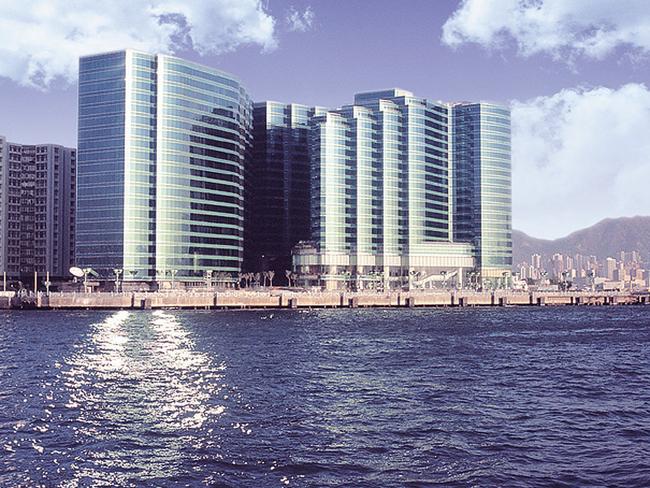
Michael insisted in his meetings with Karam and Maroun in Hong Kong that an upfront payment of an amount equivalent to $20,000 needed to be paid as a sign of good faith and explained that such payment was required before “his people” would start production of the chemicals.
Michael and Karam and Maroun provided each other with “safe” telephone numbers that supposedly couldn’t be traced back to them and which should only be used to communicate with each other to organise the deal.
The AFP bugged those phones and retrieved incriminating text messages from them, as well as recorded conversations.
Listening devices at the first meeting between Michael and Karam and Maroun in Hong Kong caught Karam bragging to Michael about having four million ecstasy tablets in Melbourne that could be used to pay for the chemicals he wanted Michael to supply. He said they were good quality pills imported from professional laboratories in Amsterdam.
Karam told Michael he wanted liquid chemicals, rather than crystals, to make ice, and that he wanted them shipped to Italy and that the first shipment should be two tonnes.
He told Michael he wanted it to be liquid “because the avenue we have from Italy to Australia is liquid”.
Karam said he had a cook arranged to turn the liquid into ice for sale in Australia.
Keen to seal the deal, Karam promised Michael he could have a share of the profit from the first batch of ice.
He upped the ante during his second meeting with Michael in Hong Kong on May 14, 2008.
Karam said he now wanted 20 tonnes of chemicals and that he wanted it sent to Mexico instead of Italy because “they don’t even check”.
He and Michel exchanged many texts between that May 14 meeting and the third Hong Kong meeting on July 2, 2008.
The texts related to the first shipment being of five tonnes to Mexico and a bit of haggling over the price Karam needed to pay.
One of the texts from Karam to Michael said: “OK, that’s fine about the money but is the 5 ton ready to go as my people are ready to start on that now.”
Michael texted back: “Yes we will start getting that ready once we have received the agreed amount. How soon do u think u will be back up here.”
Karam replied: “I have the agreed amount with me and will pass it to you as soon as I arrive there. Trust me I will not cheat you. I promise. If the first five is ready I can come anytime. Are we able to get just a small sample of it?”
Michael was told by Karam that he wanted a total of 26 tonnes of chemicals, with 20 tonnes going to Mexico and six tonnes to Australia.

The Australian Crime Commission puts the going rate for a single hit of ice (0.1 gram) on the streets of Melbourne at $100.
Karam’s planned importation of 26 tonnes of chemicals would have made 13 tonnes of ice with a street value of $13 billion.
Karam and Maroun flew back to Hong Kong to meet Michael again on July 2, 2008, to thrash out more details.
They discussed how Karam would provide the $20,000 to Michael to start the ball rolling.
Karam was recorded telling Michael he wanted the first batch of five tonnes of chemicals to be delivered to a factory in Mexico.
He said his chemist would fly from Australia to Mexico as soon as the chemicals arrived and would do the cook in Mexico.
“Everything is ready to start,” Karam was recorded telling Michael.
“The cook is ready. The chemist is ready, the factory is ready. Everything is there waiting.”
Karam told Michael he had 100,000 ecstasy pills in hand to pay for the chemicals.
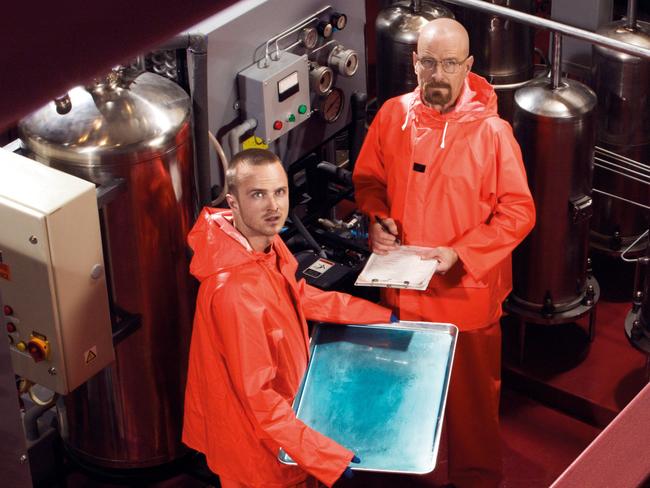
He also asked Michael if there was any possibility of importing guns along with the chemicals, but that the “pseudo is more important that the guns”.
Karam flew back to Australia and immediately began trying to find investors in Australia to fund the 26-tonne chemical venture — it has been one of Karam’s traits throughout his long criminal career to use other people’s money to pay for the drug shipments he organised.
He didn’t approach Barbaro or any of his gang members for cash. The 26-tonne chemical importation was a Karam frolic that Barbaro wasn’t involved in or aware of.
Karam was struggling to quickly get the funds he needed so he sent a text to Michael on July 22, 2008, apologising for the delay and claiming the “cartel war in Mexico” was making communications with his Mexican contacts difficult.
But Karam assured Michael he still wanted the tonnes of chemicals and that he hoped Michael would be patient while the Mexico hitch was being sorted out.
Michael responded with a text saying “just let me know when you are ready, but nothing can start here till we get what we agreed on”.
Maroun met Rosie at the Middle Park cafe on August 6, 2008, and gave her ecstasy tablets worth $20,000.
Karam was ecstatic when Michael texted later that day to say Rosie had confirmed she had received payment.
Michael told Karam receipt of the payment meant “my people are ready to start things right away”.
Karam didn’t stay ecstatic for long.
Armed with more than enough evidence of Karam’s involvement in the conspiracy to buy the 26 tonnes of chemicals, as well as his prominent roles in the 4.4 tonne ecstasy importation and 150kg cocaine shipment, the AFP arrested him during an early morning raid on his Kew home on August 8, 2008 — just two days after he sealed the ambitious chemical deal with Michael.
(See the footage of Maroun’s meeting with “Rosie” in the video above)

Inside the investigation: Putting the pieces of the puzzle together
AFP Detective Superintendent Matt Warren was heavily involved in the world’s biggest ecstasy bust from the start and headed up the investigation which followed it.
He told the Herald Sun it was intelligence received from the AFP liaison office in The Hague which eventually led to the June 2007 seizure of the 4.4 tonne shipment of ecstasy.
That non-specific information about large shipments of ecstasy coming to Melbourne from Italy was developed further by the AFP and Customs.
Other law enforcement agencies also received intelligence about ecstasy shipments, which was shared with the AFP.
“We were already conducting an investigation into Barbaro and Zirilli,” Det-Supt Warren said.
“We were targeting them in relation to their ongoing criminal activity.
“Separate to that, we received information from international agencies, as well as locally from our state police colleagues, about ecstasy shipments.
“We fed all of that information through Customs.
“Nothing we received would be considered to be a smoking gun that led us directly to the container containing the 4.4 tonnes.
“Customs were targeting a raft of different containers based on this fairly broad information that we received.
“The container which contained the 4.4 tonnes was subjected to searching by Customs because it fitted the profile of what the information received from various agencies suggested we should be looking for.

“That information was that there was a consignment of drugs coming to Melbourne and that it was probably coming from Europe.
“So Customs were looking at various containers.
“That diligence paid off when they opened one of the sealed tomato tins and found ecstasy pills.”
Det-Supt Warren said Customs alerted the AFP and his role then began in what became a 13-month operation before charges were laid.
He said the AFP already had Barbaro’s telephone bugged over its separate probe into his activities and Victoria Police were monitoring Higgs over other matters.
“Victoria Police had committed significant resources into investigating Higgs,” Det-Supt Warren said.
“Some of the evidence Victoria Police captured during their pursuit of Higgs was absolutely crucial in terms of the convictions we got, as was information provided by the Australian Crime Commission.”
Det-Supt Warren said Barbaro and Higgs, along with Zirilli and Karam, quickly became the prime suspects for organising the massive ecstasy importation.
“We had been working Barbaro from a surveillance point of view for months before the ecstasy shipment arrived,” Det-Supt Warren said.
“We twigged fairly quickly that it was probably Barbaro and his group, but we didn’t have any direct links so we couldn’t confirm that.
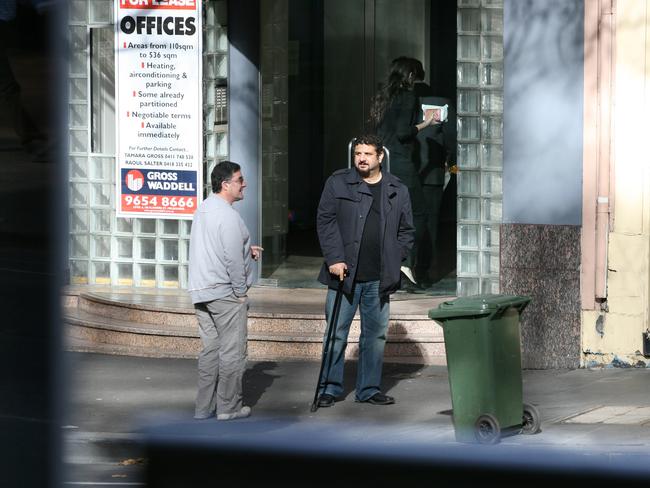
“While we had nothing specifically linking him to it at that stage, the fact he and Zirilli were in Melbourne when the container arrived was a strong indication of their involvement — as was the people they met and talked with in the days before and after the container arrived, such as Higgs, Karam and .
“Before the ecstasy arrived we were targeting Barbaro in a general sense, rather than because of some specific crime we expected him to commit.
“He was chosen to be a target because of his known background in drug dealing.
“With somebody like Barbaro, it’s like working on the likes of Tony Mokbel.
“You work on them long enough and they are going to be involved in something criminal as that is there business. They are in the business of being a crook.
“We knew enough about Barbaro that if we targeted him then sooner or later he was going to lead us to criminal activity.”
What he led them to was the world’s biggest ecstasy bust.
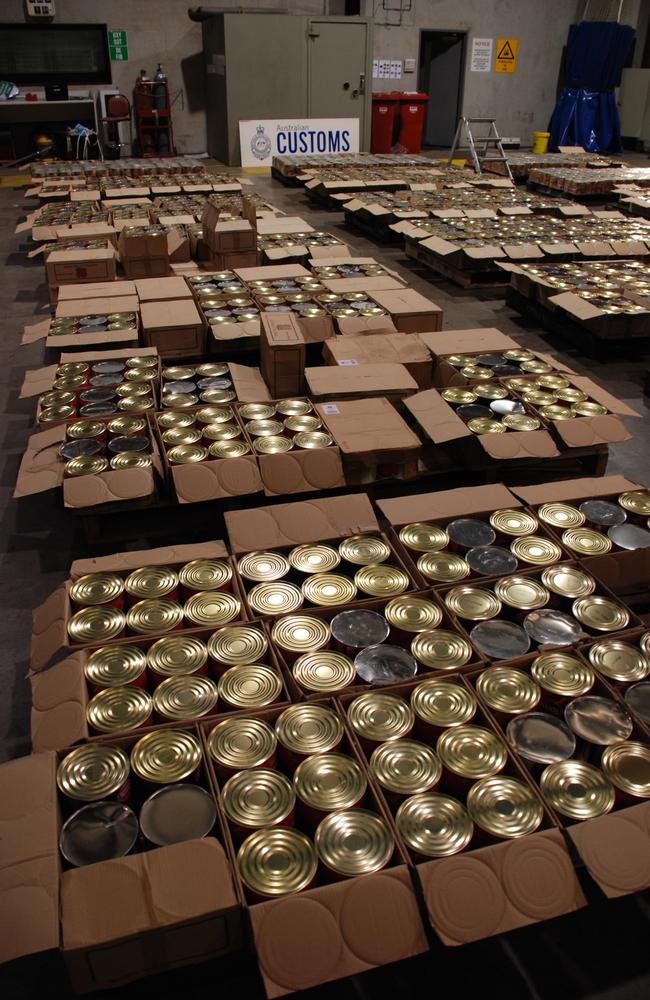
“The sheer size of the seizure created an enormous resourcing problem for us,” Det-Supt Warren said.
“All our seizures are processed by our forensics people. They are simply not set up to process 4.4 tonnes of ecstasy.
“They had never done a seizure of that size before, in fact, no one had as it was the world’s biggest seizure.
“So we had the investigation side of it, chasing who was responsible, but we also had to work out how we were physically going to process the drugs, how we were going to store the ecstasy.
“We didn’t have a drug vault that could handle 4.4 tonnes.
“We had to find a large area within the AFP to build a secure vault that doubled as a lab where the drugs could be processed and tested.
“Once they had been tested they needed to be destroyed, except for the few samples kept as evidence for the trials.
“Even that in itself was an enormous logistic exercise, which we had to do in a graduated process.”
Det-Supt Warren said it was an unexpected stroke of luck that the manager of the freight forwarding company in Melbourne contacted the legitimate company rather than the crooks.
“Had she rung the false number on the paperwork, instead of using Google to get the phone number of the legitimate company, she would have got through to the crooks and the crooks would have picked up the container and we would have made arrests as the substitute drugs were being unloaded,” he said.
“”Had that occurred, and had we arrested half a dozen low-level unpackers, there is no way we could have continued to not announce the seizure of 4.4 tonnes of ecstasy.
“That, potentially, would have put us in a position where we were not able to get the bigger players, the organisers.
“So, without question, the manager did us a favour by accidentally contacting the legitimate company instead of the crooks.
“It meant we couldn’t go ahead with the controlled delivery of the container — which would have involved us watching the container to see who picked it up and unpacked it — and meant instead that we started a long investigation that led us to make 33 arrests, including of those up the criminal tree that organised it.
“The size of the seizure in itself also did us a favour in that it was so big the
AFP made it its number one investigation and one of its highest priorities for a 12 month period.
“We had unlimited access to all the AFP’s resources to tackle it.”
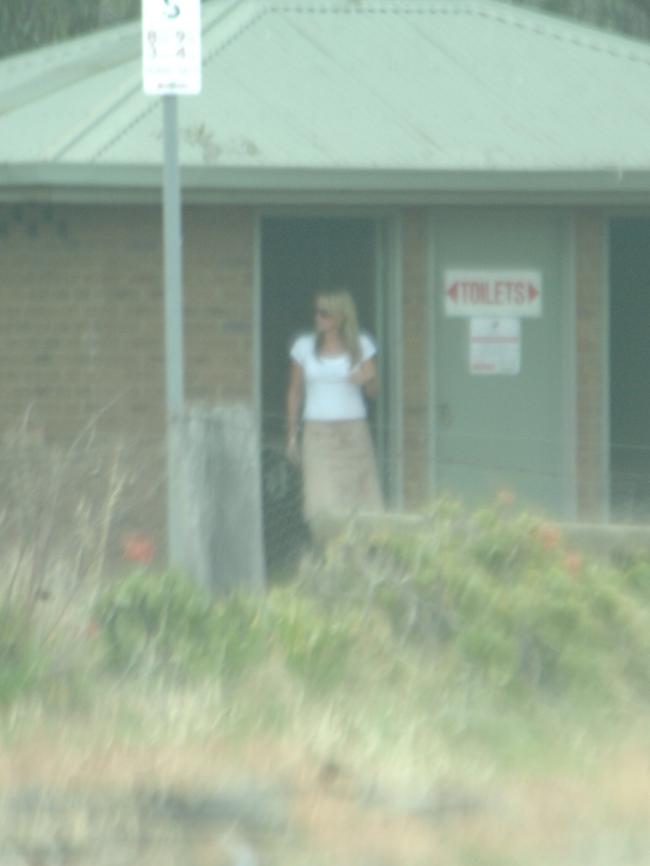
Det-Supt Warren said a good example of how having as much manpower and technical resources as were required helped enormously in gathering evidence that would otherwise have been missed was the bugging of the George Graham Park at Wunghnu, near Shepparton, on April 16, 2008.
Saturation physical and electronic surveillance of several key Barbaro gang members around the clock for weeks at a time produced intelligence that some of them were going to meet at the park and the reason was they were wary of talking over telephones as they feared, quite rightly, that their phones were bugged.
They figured sitting around a table in the bush would enable them to talk freely about their drug importation and trafficking plans.
That was a mistaken assumption as the AFP was able to set up to capture the ensuing conversations before the meeting took place.
The secretly taped conversations in the bugged Wunghnu park became part of the AFP’s brief of evidence against Barbaro and others.
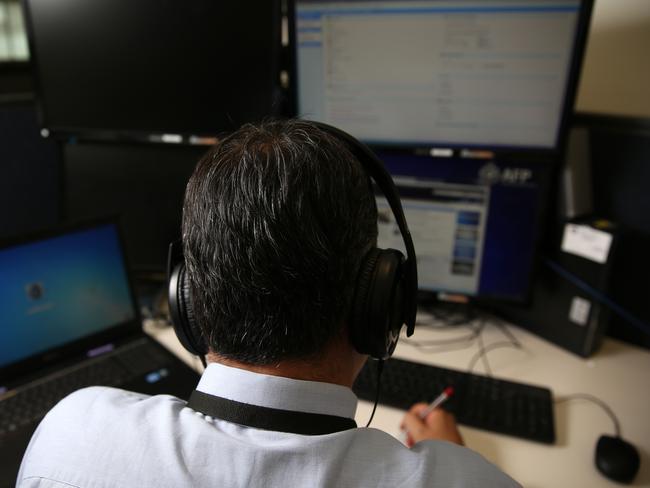
“It was crucial evidence,” Det-Supt Warren said.
“It was a great example of what can happen when you have significant resources that enable you to firstly observe a pattern of behaviour and secondly have the people available with the necessary equipment and ability to do what was needed to be done to be in a position to monitor the conversations our intelligence told us were likely to occur in the park.
“The bugging by us of the Carlton apartment in Little Palmerston that Sharon Ropa organised for her and Barbaro was also crucial for us.
“It meant that every time Barbaro came from his home in Griffith to Melbourne we knew where he would be staying and could monitor any conversations in the Little Palmerston apartment he and Ropa shared.
“It suited Barbaro to set his girlfriend Ropa up in a place where they felt safe.
“It suited us because it became a place where Barbaro and his senior gang members would gather to discuss their criminal activity.
“Conversations we monitored in the apartment provided evidence against various gang members and also gave us leads as to what they were planning and what their movements were going to be.”
Det-Supt Warren said a number of factors, some beyond the AFP’s control, contributed to making the investigation so successful.
“It was a perfect storm of events coming together,” he said.
“There was the sheer size of the seizure, the quirk of fate that led to the controlled delivery not being successful and the crooks failing to get their hands on the drugs.
“All that meant we could commit to giving the operation whatever it needed.
“The majority of the brief of evidence against them came after the seizure of the container.
“It was their attempts to locate it, find out what had happened to it and then further drug activity to get the money to pay the debt they owed for it that gave us the evidence to charge so many of them.
“Barbaro in particular became a lot more hands on than he normally would be. Crooks of his stature usually stay well removed from the actual drug dealing so as to avoid detection.
“They have people to do the dirty work for them.
“But he became very hands on after the container was seized.
“He did so through desperation because he needed money quickly to pay back the $10 million to the syndicate in Europe and in that desperation made mistakes and provided us with the evidence to help convict him.
“There was a bill to be paid and the consequences of not paying it would be serious.
“It was at least $10 million, and I suspect that figure was a negotiated settlement.
“I suspect what was really owed was a lot more than that and there was some negotiation, based on Barbaro’s high standing with the international Calabrian mafia community, for him to get a discount on what was really owed.

“The Calabrians in Europe would have borne some of the loss themselves and it may be that there were family members in Italy who copped some of the loss without requiring Barbaro to pay them.
“The $10 million Barbaro sent to Europe wasn’t the full debt.
“Certainly $10 million doesn’t equate to 4.4 tonnes of ecstasy. There was certainly a loss that the European syndicate would have had to bear.”
Det-Supt Warren said it was likely the $10 million Barbaro was required to pay would have been an agreed amount to build trust back up with the European syndicate so it would continue to provide Barbaro with drugs.
He said while the AFP had no specific intelligence which pointed to the Calabrians in Italy being more senior than those in the Australian syndicate it was likely those in Italy were higher up the Calabrian mafia hierarchy.
“There is a long standing history that that is the way the syndicate operates,” Det-Supt Warren said.
“There has been enough intelligence gathered over the years by the AFP, the ACC and the NCA before it, as well as various other organisations who have looked at the ‘Ndrangheta as a group, to say the leadership goes right back to Calabria.
“It branches out into various parts of Europe. They have strong links in Germany.
“There have been quite well publicised Calabrian mafia murders that occurred in Germany that are linked through family connections to Australia.
“There is no question those clans stay strong.
“I think that in terms of the standing in the world of organised crime that the Australian arm of the Calabrian mafia is a bit lower down than the Europeans.
“The centre of Calabrian mafia operations is in Europe, with Australia as a franchise.
“Having said that, Barbaro had a very high standing in the organisation overseas.”
Six Calabrian mafia members were executed in a hail of bullets as they left a birthday party in the German city of Duisberg in August 2007.
They were victims of a long-running feud between the Strangio-Nirta and Pelle-Vottari Calabrian mafia clans. The Pelle-Vottari clan is closely aligned to the Romeo clan.
The warring clans have relatives in Australia who police believe are Calabrian mafia members, particularly the Nirta, Pelle and Romeo clans.
The feud started in 1991 when two members of the Strangio-Nirta clan were shot in a fight with members of the Pelle-Vottari clan during carnival celebrations in the Calabrian mafia stronghold of San Luca in southern Italy.

A number of tit for tat reprisal attacks happened in following years, culminating in the Duisberg massacre of 2007.
Massacre ringleader Giovanni Strangio was jailed for life in 2011.
AFP Commissioner Andrew Colvin yesterday said the world’s biggest ecstasy bust was a superb result.
“This prosecution demonstrates the tangible, disruptive results that can occur when the AFP and its partners actively target significant organised crime ventures, and follow through with a combination of tested and innovative investigative tactics,” he told the Herald Sun.
“More than 400 members were involved in the investigation leading up to the arrest phase.
“Their patience and dedication not only prevented 15 million tablets of MDMA from hitting Australian streets, it also dismantled the senior levels of a diverse, well-connected international criminal enterprise that was capable of importing large quantities of drugs, facilitating an associated supply chain and laundering millions of dollars.
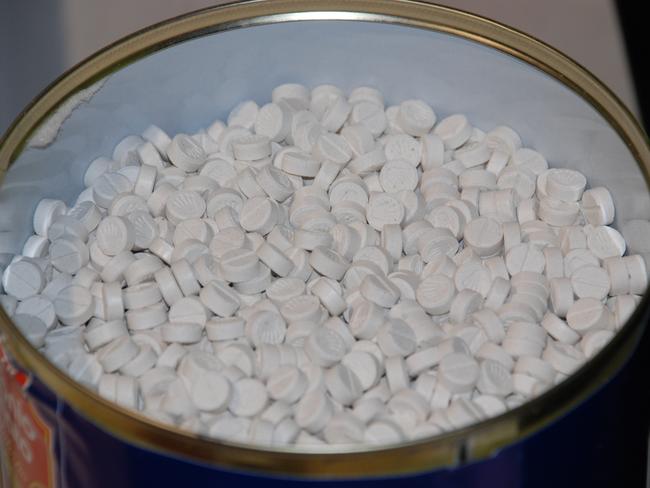
“This is one of the most significant investigations in the history of the AFP and it is one that we — as an organisation and individuals — are very proud of.”
Commonwealth Director of Public Prosecutions Robert Bromwich said the charges which followed the world’s biggest ecstasy bust resulted in one of the longest and most successful CDPP prosecutions ever.
“Thirty two of the 33 people known to have been involved have been convicted now,” Mr Bromwich told the Herald Sun.
“The only one who hasn’t is the one who absconded.
“We have had very long running counter terrorism trials, very long running major tax fraud trials and very long running commercial matters.
“We are in the business of running big, difficult trials.”
Mr Bromwich said prosecutors from his department had worked incredibly closely with the AFP.
“The collaboration took place right from the very earliest stage,” he said.
“Our people were involved in advising pretty much on a daily basis on an incredible range of issues, legal, evidentiary, practical and the works.”
Mr Bromwich said the sentence of life with a 30 year non-parole period given to drug gang boss Pasquale Barbaro was one of the longest ever handed down in Australia for a drug offence.
He said there had been a few sentences of life with no parole, but only when the offenders forced a trial by pleading not guilty.
Barbaro pleaded guilty.
Mr Bromwich said it was a “stiff but appropriate sentence” which would send a message to other drug dealers what they were putting at risk by offending.
“What a case like this tells us, in common with many of our other cases, is that a huge amount of work goes on behind the scenes by the police and the prosecutors and the importance of the pivotal role of the prosecutor in shaping and running the case,” Mr Bromwich said.
“What the prosecution really do, what they are engaged in, is the art of bridging the gap between knowing and proving.
“So they are taking the evidence that has been obtained, analysing it, sorting it out, working out where gaps may be and requisitioning for additional evidence to close gaps of that kind.
“What a complex case like this teaches you is how important that collaborative exercise is, how important it is to have experienced, dedicated prosecutors who are able to value add in such an important way to the already very good effort by the police.”
PROFILES: The who’s who of the tomato tin mafia
The characters charged over the world’s biggest ecstasy bust and offences related to it included Calabrian mafia bosses, convicted killers, a bike gang boss, a Lebanese-born shipping industry insider and some of Australia’s most prolific money launderers.
This is the who’s who of the 33 people charged (one of the 33 can’t be identified as his name has been suppressed by the County Court).
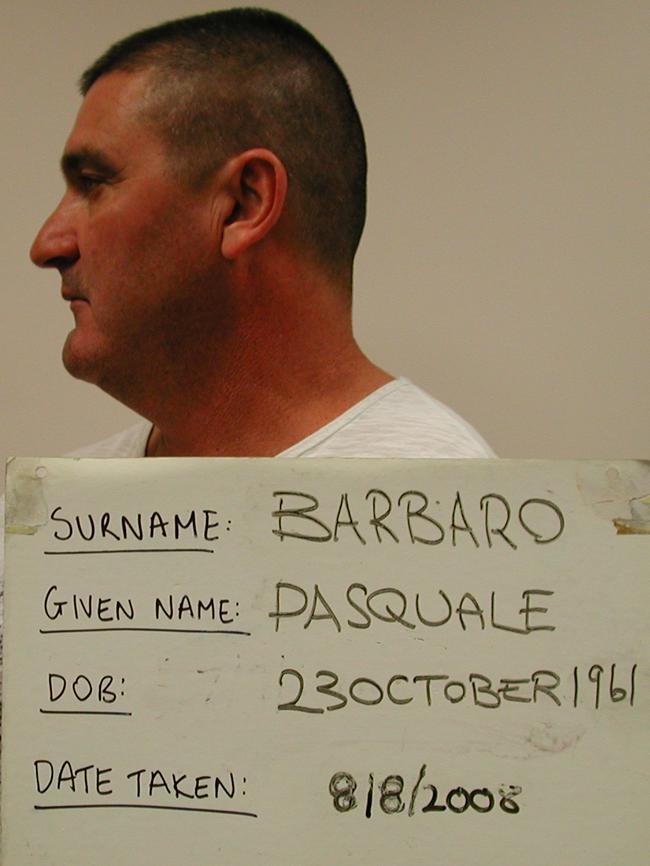
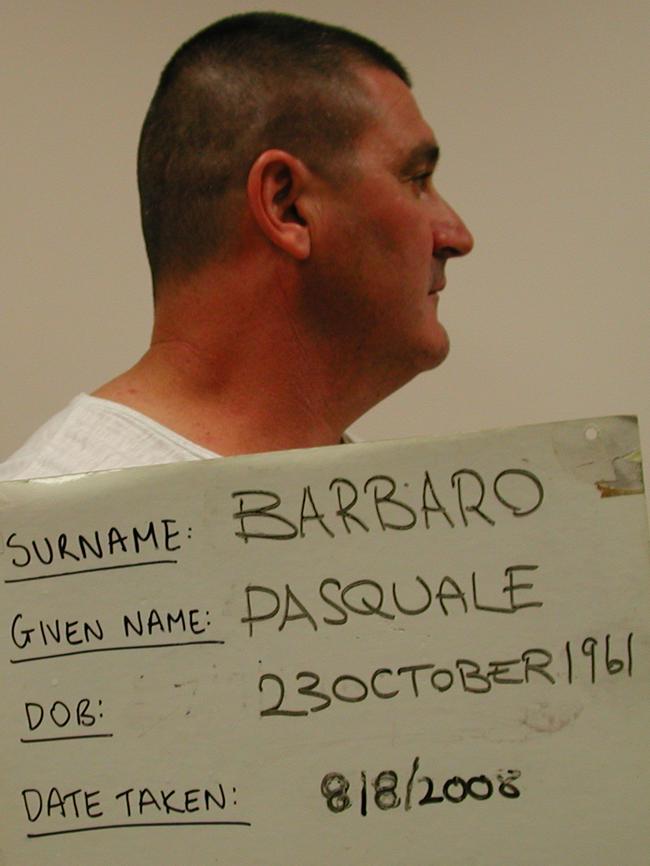
PASQUALE BARBARO, 53, formerly of Whites Rd, Tharbogang, near Griffith, New South Wales.
Nicknames: “Pat” (anglicised version of Pasquale), “Garbo” (a word play on his surname), “Ugly” (because he is no oil painting) and “Muscles” (because he worked on them).
Pleaded guilty to conspiring to traffic 4,4 tonnes of ecstasy, trafficking 1.2 million ecstasy tablets and attempting to possess 150kg of cocaine, Asked for a further three offences to be taken into account. Those offences were conspiring to import 100kg of pseudoephedrine from India, dealing with at least a $1 million in cash which was the proceeds of crime and money laundering.
Sentenced to life and ordered to serve a minimum of 30 years.
Barbaro is a senior Calabrian mafia boss and one of Australia’s biggest ever drug dealers.
He has a tattoo on his bicep which echo the words of Winston Churchill. It reads: “If you are going through hell — keep going.”
Barbaro is the undisputed boss of the syndicate charged over the world’s biggest ecstasy bust.
He is easily the most powerful and domineering gang member, with others in the syndicate being very deferential to him.
It was Barbaro — through his senior role in the Calabrian mafia — who had the international connections to give him access to tonnes of drugs.
An unknown male, most often referred to as “The Turk”, was pre-eminent among the European group providing ecstasy to Barbaro. Barbaro was in regular contact with “The Turk”, usually by text.
Barbaro is the son of Francesco “Little Trees” Barbaro, one of the men named in the Woodward royal commission report as being an influential member of the Griffith Calabrian mafia cell which murdered anti-drug campaigner Donald Mackay in 1977.
In a trait which is common in Calabrian mafia circles, Pasquale Barbaro married his cousin, the daughter of his mother’s sister, when he was 23 and she was 18. They have four children.
In another trait which is common in Calabrian mafia circles, Barbaro became a marijuana grower — as, according to the Woodward royal commission report, his father and uncles had been before him.
And in yet another common Calabrian mafia trait, Barbaro was most comfortable committing criminal acts with close relatives he could trust — keeping it in the family is a Calabrian mafia motto. His cousin Saverio Zirilli was his right-hand man in the drug dealing that brought both of them down. Another of Barbaro’s cousins, Pasquale Sergi, of Griffith, worked alongside Barbaro and was also convicted over the world’s biggest ecstasy bust and another cousin, Domenico Barbaro, was convicted of trafficking ecstasy for the Barbaro syndicate.
Barbaro was an associate of Melbourne Calabrian mafia boss and fruit marketeer Rosario “Ross” Gangemi.
Gangemi died of natural causes at the height of Barbaro’s drug dealing in July 2008.
Barbaro was caught by the AFP in a bugged telephone conversation with fellow gang member Salvatore Agresta discussing coming down from Griffith to pay his respects at Gangemi’s funeral.
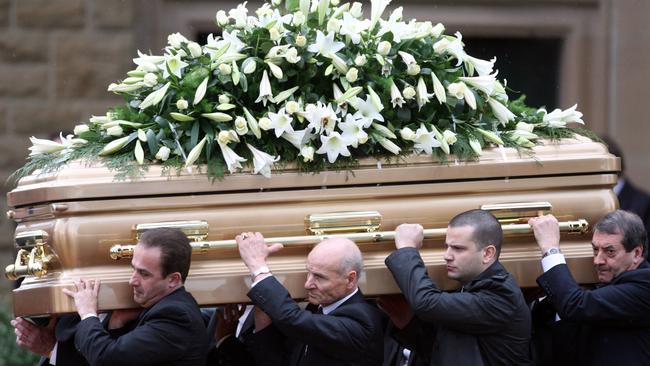
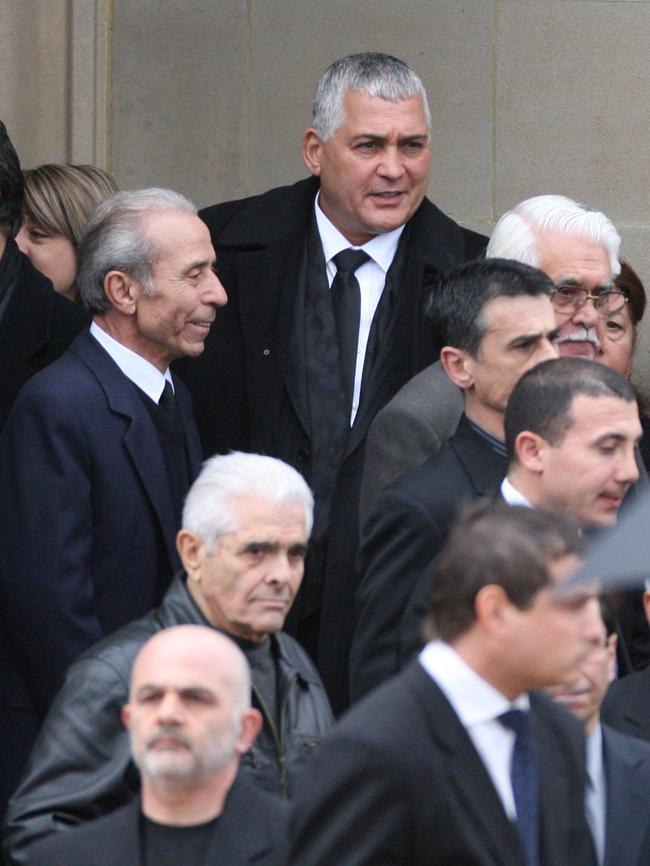
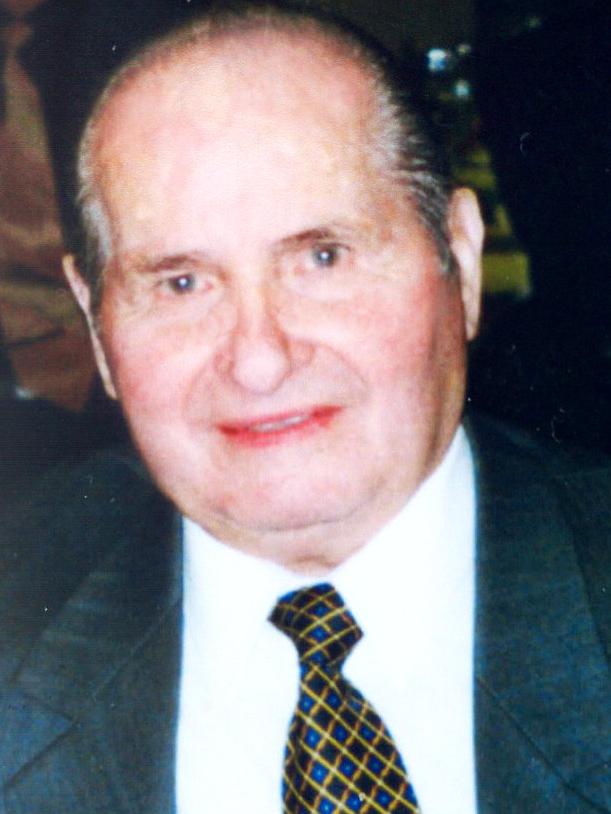
Agresta also attended Gangemi’s funeral at St Monica’s Catholic Church in Moonee Ponds on July 7, 2008, as did Mick Gatto, under the watchful eye of undercover police.
Barbaro was charged on April 16, 2009, with two counts of conspiracy to murder.
Those charges were dropped after Barbaro was jailed for life in May 2012 and ordered to serve a minimum of 30 years over his drug charges.
In rejecting a bid for bail by Barbaro, Magistrate Simon Garnet provided details of the alleged murder plots, which were outlined by Victoria Police Det-Sgt Daniel Baulch.
Evidence was given that as a result of information provided to Victoria Police by the AFP, a view was formed that Barbaro and Barbaro gang members Frank Madafferi and Graham Potter had conspired to commit murder.

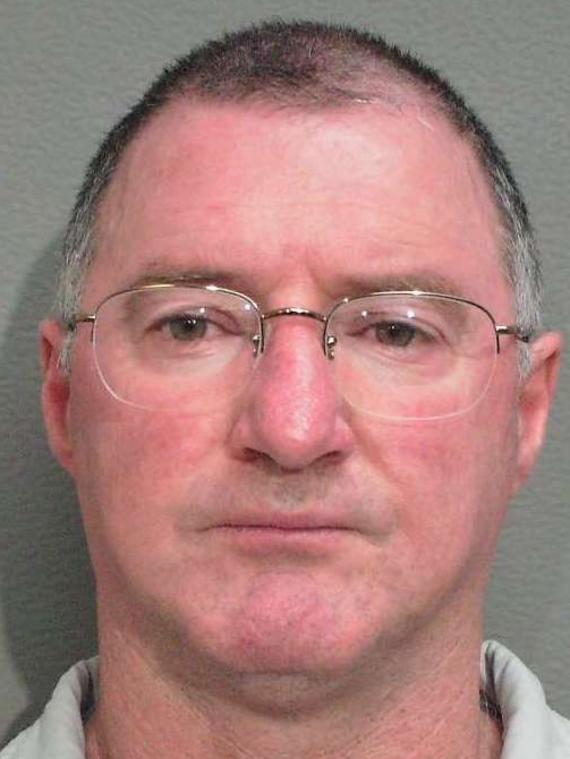
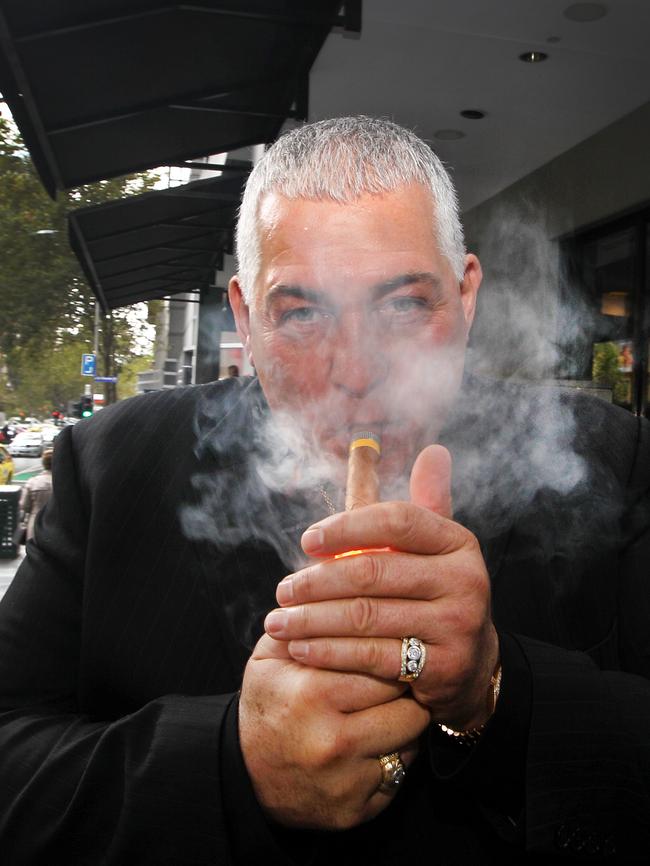
The alleged intended victims were a man Barbaro blamed for the 4.4 tonne ecstasy shipment being seized, who was a mate of underworld identity Mick Gatto, and a second man Barbaro had fallen out with.
The conspiracy to murder case against Madafferi didn’t proceed past the committal stage and Potter fled, and hasn’t been found, rather than face the drug and conspiracy to murder charges against him.
Barbaro’s bail hearing was told the prosecution would rely on physical surveillance, telephone intercept and optical and listening device material, photographs, witness statements and forensic material to support the charges.
It heard the prosecution would allege Barbaro and his overseas criminal contacts blamed Mr Gatto’s mate, whose name has been suppressed, and who the Herald Sun will call “Gatto’s mate” for the failed 2007 ecstasy shipment and wanted him killed and that Barbaro had a long standing vendetta against the second intended murder victim, who also can’t be named for legal reasons and who the Herald Sun will call “vendetta victim”.
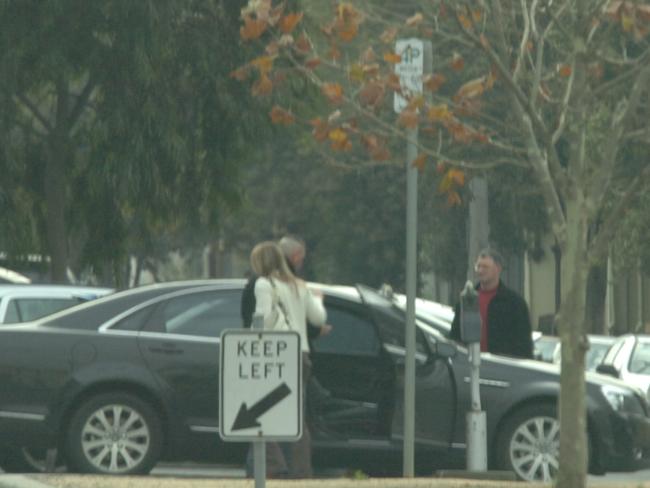
In his August 2010 bail hearing judgment, Magistrate Garnett said the prosecution would allege Barbaro enlisted Potter to murder (Gatto’s mate) between January and August 2008.
“It is contended that intercept material will demonstrate a number of discussions involving Mr Barbaro and others in the plan to murder (Gatto’s mate),” the judgement said.
“It will also be alleged that a note written by Mr Barbaro listing possible addresses where (Gatto’s mate) may be located was found at the Carlton premises where Mr Barbaro was staying and where firearms were located.
“It is also alleged that Mr Barbaro, Mr Madafferi and Mr Potter conspired to murder (vendetta victim) between June and July 2008.
“The prosecution intend to rely on intercept material, physical surveillance and the evidence of Witness A, who will allegedly give evidence that Mr Barbaro asked him in June 2008 whether he had killed someone before and if he was interested in doing so for $100,000.
“Sgt Baulch told the court that surveillance material will reveal a plan by Mr Barbaro and others to attend the Reggio Calabria Club on July 24, 2008, to murder (vendetta victim).
“The prosecution will allege that arrangements were made to obtain a ‘clean car’ and to lure (vendetta victim) to an appropriate location.
“It will also be alleged that on July 24, 2008, firearms and ammunition subsequently seized from the residence where Mr Barbaro was staying in Carlton were given by Mr Barbaro to Mr Potter to use in the murder of (vendetta victim).
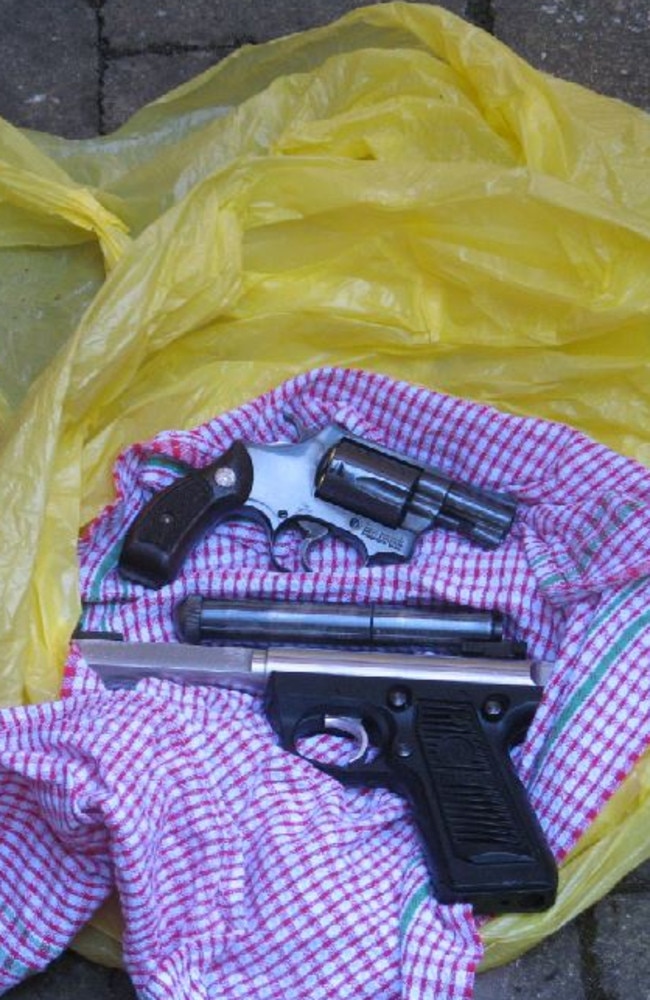
“It is alleged that the plan failed when the ‘clean car’ they had obtained broke down on the way to the club and (vendetta victim) left before Mr Potter, Mr Barbaro and Witness A arrived.
“Sgt Baulch told the court that forensic evidence will reveal the presence of gunshot residue in the ‘clean car’.
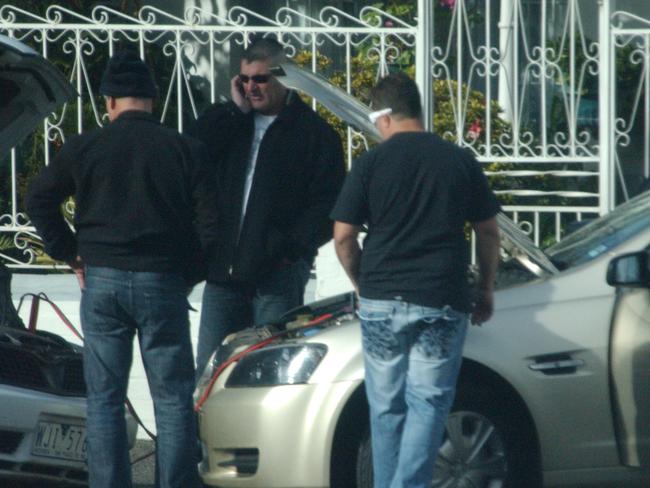
“Sgt Baulch told the court that in his view Mr Barbaro, if released on bail, would be a risk of failing to answer bail, endangering the safety and welfare of others and interfering with witnesses.
“He also told the court that on February 2 and 3, 2010, whilst remanded, Mr Barbaro made threats to a prosecution witness who was also in custody in relation to another matter.
“It is alleged that Mr Barbaro told this person words to the effect ‘you’re a dog, you know what happens to a dog in a place like this’.

“In relation to the safety of Witness A, Sgt Baulch told the court that information in his possession suggested an associate of Mr Barbaro has tried to contact this witness.
“He agreed that Mr Madafferi had been granted bail and the magistrate who granted bail noted one of the reasons being the lack of strength of the prosecution case.”
Police believe there were also failed plans to try to murder Gatto’s mate at Gatto’s son’s wedding in March 2008 and after a kickboxing tournament the night before the Gatto wedding.
Det-Sgt Baulch said during one of Barbaro’s court appearances that Barbaro believed Gatto’s mate had either stolen drugs belonging to Barbaro’s gang or had caused them to be seized by police.

“Barbaro sourced and co-ordinated the obtaining of firearms and vehicles for the murder,” Det-Sgt Baulch told the court.
“On March 28, 2008, it is believed that an attempt was made to murder (Gatto’s mate) at a boxing event held at Docklands.
“Barbaro and others identified (Gatto’s mate’s) vehicle in the car park at the event and an attempt was made to shoot (Gatto’s mate) upon returning to his vehicle.”
The alleged plan was aborted at the last minute because the getaway car had mechanical problems, the court was told.
Barbaro got his first cannabis cultivation charge in 1990. In 1998 he was convicted at the Griffith Magistrates’ Court of preventing a witness from attending.
Supreme Court Judge Betty King said in sentencing Barbaro in 2012 that “over the period of 1990 through to almost 2000 you were dealing with substantial offences of cultivation of cannabis”.
One of the charges related to a crop of 20,000 marijuana plants Barbaro was growing on a farm south of Griffith.
Barbaro was jailed for 14 years over those offences, but only served two years as after numerous appeals and retrials the Director of Public Prosecutions decided not to proceed with the matter — freeing Barbaro to graduate from dope growing to massive importations of ecstasy and other drugs.
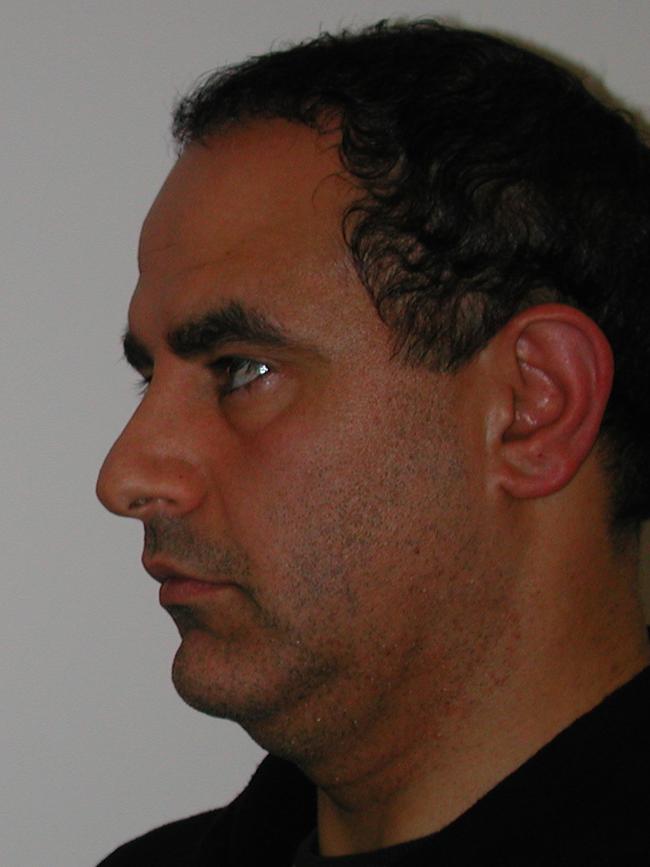

ROB KARAM, 48, formerly of Derby St, Kew.
Nickname: “Pizza” (because of the type of restaurant he chose to meet gang members in to discuss secret business, usually Café Romantica in Lygon St, Brunswick, or Curly Joe’s in Maribyrnong), Tardo (because he was always late to meetings and slow to pay his debts), Cream or Ice Cream (a play on words relating to his surname as well as an indication of his fondness for attending a gelato bar in Lygon St).
Found guilty of conspiring to import the 4.4 tonnes of ecstasy. Jailed for 19 years and ordered to serve a minimum of 15. Awaiting further sentencing after being convicted of other drug offences.
Karam’s experience working in the customs clearance and international freight forwarding industries, as well as his network of corrupt dock and shipping industry contacts, have made him the go to man for decades for organised crime bosses wanting to import drugs to Australia in shipping containers.
He helped convicted drug boss Tony Mokbel get tonnes of drugs worth billions of dollars into Melbourne, was the man Pasquale Barbaro went to when he wanted millions of ecstasy tablets shipped from Italy to Melbourne. He also worked with other major drug importers.
It was Karam’s job to identify legitimate importing businesses in Melbourne that were unlikely to attract the attention of Customs when containers arrived that appeared to be destined for delivery to these legitimate companies.
Falsified shipping documents organised by Karam to look genuine meant the phone number freight forwarding companies rang to arrange delivery of containers in the belief it was the number of the legitimate company was actually the phone number of a drug smuggling gang member.
Karam also organised what are known in underworld circles as piggy back importations.
The piggy back method involves having corrupt dock workers overseas and in Melbourne.
Karam would identify a Melbourne company which was legitimately importing goods from such places as South America.
Corrupt waterside workers would put illegal drugs in with the legitimate shipment and then seal the container so Customs in Melbourne would not suspect the cargo had been tampered with and that illegal drugs were piggy backing with a legitimate cargo.
Corrupt dock workers in Melbourne would get to the container as soon as it was unloaded, break open the seal, take out the drugs and then reseal the container so the legitimate cargo could go on its merry way.
One of the charges Karam and Barbaro were convicted over involved 150kg of cocaine that arrived in Melbourne via the old piggy back trick.
Karam was secretly taped by an undercover police officer in Hong Kong as he negotiated to buy 26 tonnes of chemicals to be shipped to Mexico and Australia to make ice.
He asked the undercover cop, who was posing as a Chinese organised crime figure, if he could also buy guns to smuggle into Australia.
SAVERIO ZIRILLI, 58, formerly of Whites Rd, Tharbogang, near Griffith.
Nicknames: “Baldy” (because he is).

Pleaded guilty to conspiracy to possess a commercial quantity of ecstasy, trafficking in a commercial quantity of ecstasy and aiding and abetting the importation of a commercial quantity of cocaine.
Sentenced to 26 years and ordered to serve a minimum of 18.
A cousin of Barbaro and Barbaro’s most trusted associate.
No previous convictions.
Played a leadership role in the Barbaro syndicate, but deferred to Barbaro.
Zirilli stuck to the Calabrian mafia code of omerta after his arrest. Omerta involves members maintaining absolute silence when questioned about the illegal activities of fellow cell members.
Forensic psychologist Stephen Woods gave evidence to the court that when Zirilli was asked about the nature of his offending and why he got involved he replied that he couldn’t make any comment as to do so would place his own life at risk and, of greater concern to him, the lives of his wife and four children.
Sentencing judge Betty King said Zirilli was dealing in massive amounts of drugs over a long period.
“This was not an example of a crime where you, as a result of being pushed, or angry, or suffering financial hardship had determined to do something totally out of character and then stop,” Justice King told Zirilli.
“This continued on for a substantial period of time.
“You were in a lesser role undoubtedly than that of Pasquale Barbaro but you were, equally, his right hand man and that makes you relatively high in the hierarchy of offending of those before the court.
“You are not, to give an example, a street level trafficker involved in selling small amounts of pills.
“You are assisting Barbaro to deal with, obtain and traffick some 15 million ecstasy tablets.
“You go in his stead to meet the European suppliers, which is an indication of the high level of trust in which you are held and your position within the hierarchy of this organisation.”
Police who raided Zirilli’s Griffith home on the day various Barbaro gang members were arrested in 2008 found he was a man who liked to be prepared.
He had a shotgun under his bed and several boxes of viagra in a bedside table.
GRAHAM POTTER, 57, formerly of Pipers River Rd, Pipers River, Tasmania. Nickname: “Devil”(as in Tasmanian devil).

One of Australia’s most wanted men.
Charged with trafficking a commercial quantity of ecstasy provided by the Barbaro syndicate. Also charged with conspiring to murder two men, one of them an enemy of Barbaro and the other the man blamed by the Barbaro syndicate for the 4.4 tonne shipment of ecstasy being seized by police — that man is a mate of underworld identity Mick Gatto.
One of the failed murder plots Potter was charged over was to have taken place at the wedding of one of Gatto’s sons.
Barbaro, who first met Potter in jail, was charged over the failed murder plots, with police claiming Barbaro hired Potter to kill the two men. Barbaro’s conspiracy to murder charge was dropped after he was sentenced to life with a 30-year-minimum over his drug charges.
The guns Potter allegedly intended using to commit the two murders were found buried in the garden of Barbaro’s Carlton love nest.
Potter fled after being given bail and is still missing.
He is known in the underworld as the ‘head and fingers killer’
So called because of what he did to 19-year-old Kim Narelle Barry in 1981.
He met Ms Barry on the dance floor at a Wollongong disco while at his buck’s night.
Potter, a coal miner at the time, took her back to his flat and killed her with two blows to the head, crushing her skull.
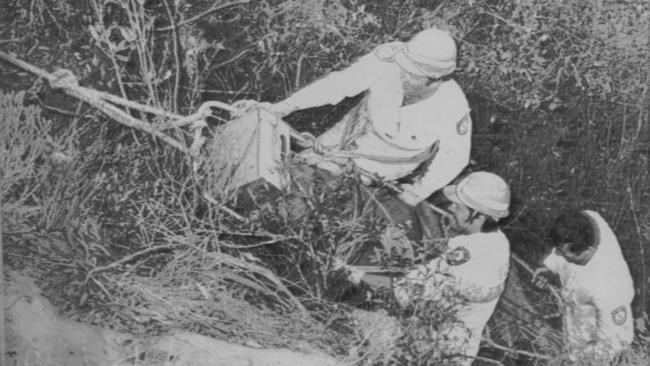

Evidence police gathered later suggested Ms Barry was attacked because she refused to have sex with Potter after discovering he was about to be married.
Potter put Ms Barry’s body in a bath and used a hacksaw to decapitate her before chopping off her fingers in the hope of hiding her identity if her body was found.
Potter threw Ms Barry’s naked body over the side of a cliff at Jamberoo Lookout, near Wollongong.
The body got caught in tree foliage and ended up on a ledge wedged against a tree, where it was found two days later.
A bag containing her skull and severed fingers was found three weeks later.
Potter was last seen fleeing from a car during a routine vehicle inspection by police in Tully, Queensland, in August 2010. A later search of a caravan park Potter had been staying in at Tully found his abandoned tent and other possessions.
FRANCESCO MADAFFERI, 54, lived in Hermitage Drive, Greenvale and ran Mondo Fruit in Sydney Rd, Coburg up until his arrest in 2008.
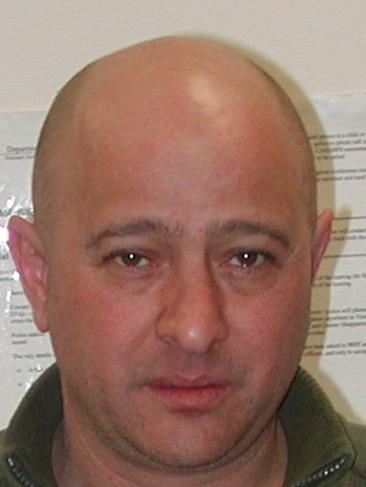
Nicknames: “Fruit” (because of his business), “Chiccio”, “Pacho” (a diminutive from the Calabrese “pacciu”, meaning crazy or mad), “Madman” (because he was).
Found guilty of trafficking in a commercial quantity of ecstasy. Jailed for 10 years and ordered to serve a minimum of seven.
Senior Calabrian mafia member in Victoria.
He was a major drug dealer within months of former federal minister Amanda Vanstone overturning a decision to deport him.
The lifting of court suppression orders enables the Herald Sun to reveal details of death threats made by Madafferi.
Police secretly taped him threatening to chop an associate “into little pieces” after he won his nine-year legal battle to stay in Australia.
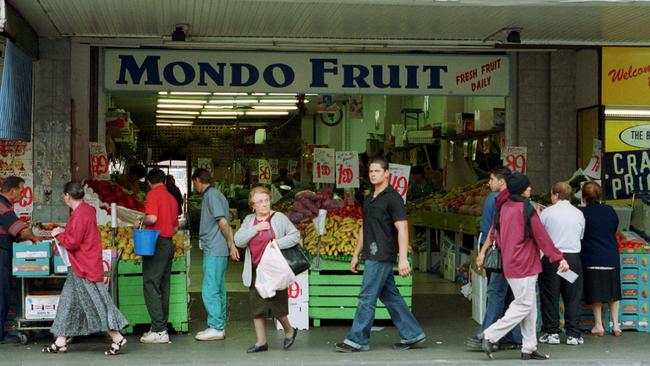
Madafferi was a drug dealer for the Calabrian mafia dominated gang charged by the AFP over the world’s biggest ecstasy bust.
Members of that syndicate were nabbed in 2008 after they imported 4.4 tonnes of ecstasy into Melbourne from Italy.
Ms Vanstone, the then Immigration Minister, granted Madafferi a permanent spouse visa in 2005.
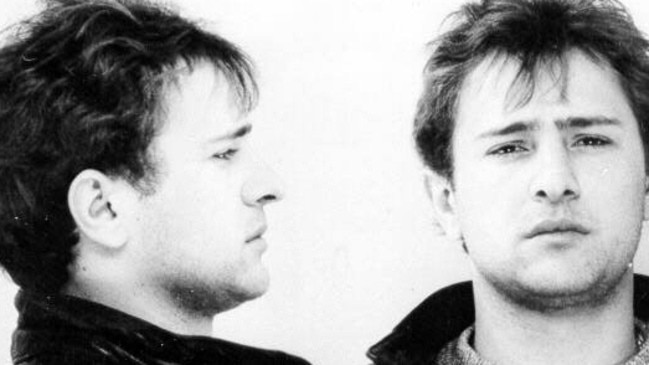
That reversed a 2000 decision by her predecessor, Philip Ruddock, to refuse him a visa on the ground he was of bad character.
Mr Ruddock said it would be against the national interest to allow Madafferi to stay in Australia.
He made that decision after Victoria Police claimed if Madafferi was allowed to stay he would “continue to carry out acts of violence on behalf of an organised crime syndicate”.
Victoria Police claimed then that Madafferi “belongs to a crime family involved with blackmail, extortion and murder”.
Just three years after Ms Vanstone rescued Madafferi from deportation he was taped by police telling fellow Calabrian mafia drug dealer Pasquale Barbaro he intended kidnapping criminal associate Pino Varallo so he could “tear his head off and chop him into little pieces”.
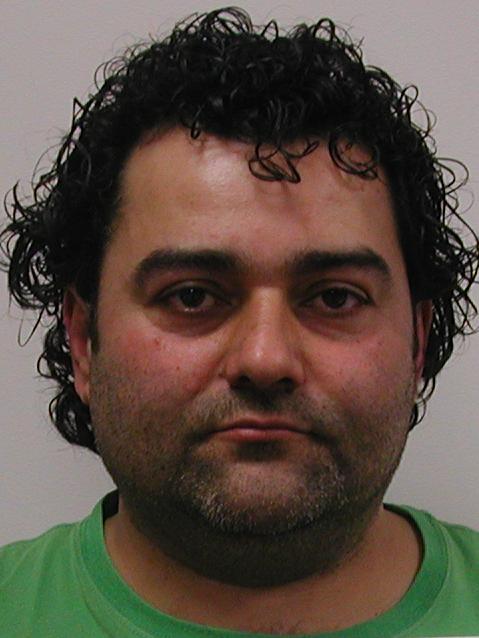
A scared Varallo rang Barbaro on July 26, 2008, and as the AFP listened he said he had recently spoken to Madafferi and that Madafferi was “going off his rocker” and was “off his tree” and had threatened slit Varallo’s throat or shoot him.
Madafferi also bragged in another taped conversation that while Barbaro controlled drug operations interstate “Melbourne is mine”.
He angrily warned Varallo to not “break my f…..g balls on my f…… turf” and that he, not Barbaro, was “responsible for Melbourne”.
Madafferi was charged in 2009 with conspiracy to murder in relation to yet another falling out, but the charges didn’t proceed past the Magistrates’ Court committal stage.
He failed to reveal convictions in Italy for stabbings, extortion and drug offences when he came to Australia in 1989 on a six-month visitor’s visa and stayed illegally.
He married Australian citizen Anna La Verde the following year and the couple had four children.
Madafferi was caught and detained as an illegal immigrant in 1996 after a raid by Immigration Department officers and detectives from Victoria Police’s organised crime squad.
There was an outstanding warrant for his arrest in Italy at the time, where he faced almost five years’ jail on unserved sentences for violence and dishonesty offences.
Madafferi had also served jail time in Italy for kidnapping, mafia conspiracy, theft and other offences against the person — he was released from prison in 1987.
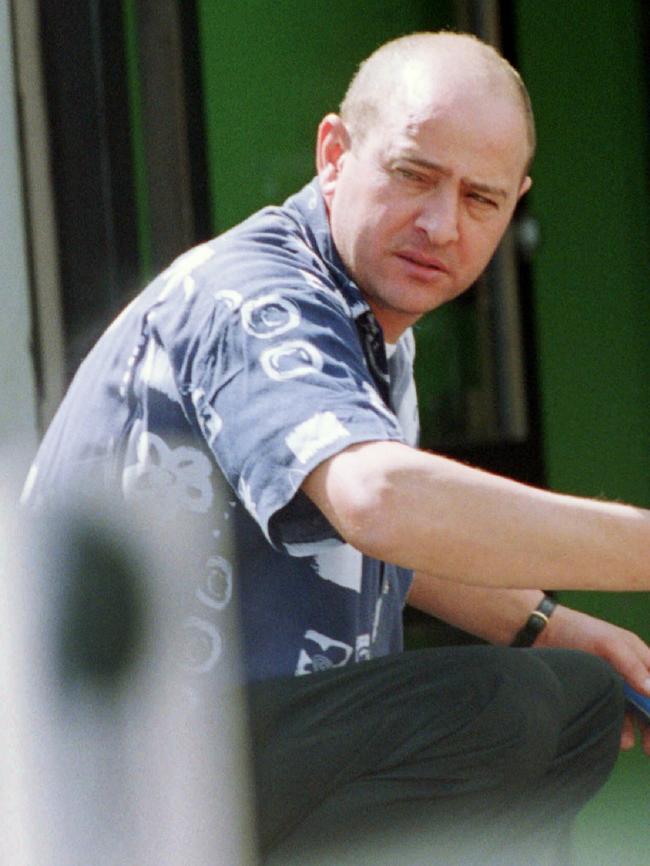
Documents seen by the Herald Sun reveal Mr Ruddock’s 2000 decision not to grant Madafferi a visa was based on his view that allowing Madafferi to stay in Australia would have a detrimental effect on Australia’s reputation and good name in the international community.
“On balance, I found that due to the seriousness of Mr Madafferi’s convictions and his outstanding warrant of arrest and sentence in Italy, it would be in the national interest to refuse his visa,” Mr Ruddock’s said in a 2000 document sent to Madafferi’s lawyers.
Mr Ruddock’s 2000 decision not to grant Madafferi a visa was upheld in 2002 by the full bench of the Federal Court.
Former Senator Vanstone confirmed to the Herald Sun in 2006 that Madafferi had later been given a permanent spouse visa.
“Given all the circumstances surrounding the case I believe it was appropriate to grant the visa,” she said then.
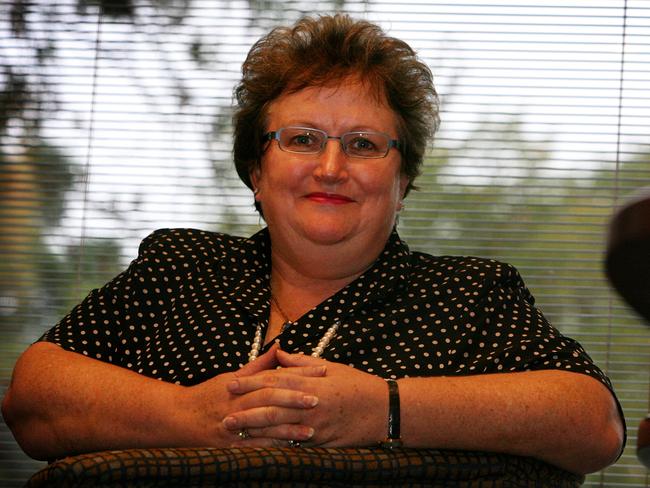
Madafferi was dealing drugs just months later.
He was heavily involved with various members of the Barbaro drug gang, and was selling ecstasy provided by Barbaro gang members.
AFP agents secretly taped Barbaro and Madafferi discussing drug deals.
Surveillance officers also secretly watched Barbaro and Madafferi when they flew to Perth together on May 19, 2008, to organise interstate drug deals, with Madafferi introducing Barbaro to Perth-based Calabrian mafia drug dealers.
Madafferi and Barbaro were both arrested on August 8, 2008, by AFP agents.
Documents seized from an apartment in Little Palmerston St, Carlton, which Barbaro used when visiting Melbourne from his home in Griffith, revealed precise details of the ecstasy supplied to Madafferi by the Barbaro syndicate.
Barbaro’s business records showed Madafferi received 57,000 ecstasy tablets between February and May 2008, and that he also helped Barbaro traffic a further 35,000 pills to a Perth drug gang.
Madafferi’s brother Tony was banned from Crown casino by Victoria Police Chief Commissioner Ken Lay in 2014 under the same powers used to previously ban drug boss Tony Mokbel and various other underworld figures, including Mick Gatto, from the gambling mecca.
Allegations that Tony Madafferi was a hitman for the Calabrian mafia and a prospective Godfather of the Italian secret society were aired in court during the 1993 inquest into the death of fruiterer Alfonso Muratore.
The coroner rejected a bid by Tony Madafferi’s lawyer, Colin Lovitt, QC, to suppress the claims — but the coroner did warn the media that the allegations were simply that, allegations, and should not be reported as fact.
Tony Madafferi has denied the claims and has not been charged in relation to any of the allegations made against him during the Muratore inquest.
CARMELO FALANGA, 49, formerly of Lacey Rd, Bugle Ranges, South Australia.

Nicknames: “Sticks” (because he walked with one), “Fingers” (a word play on his surname) and “Choc” (a politically incorrect reference to his dark skin).
Found guilty of conspiracy to import the 4.4 tonne shipment of ecstasy from Italy. Sentenced to 23 years and ordered to serve a minimum of 16 years and 6 months.
Senior and powerful Italian organised crime figure in South Australia. He and Barbaro financed the importation of the 4.4 tonnes of ecstasy from Italy and they became liable to each pay $5 million to the European syndicate to compensate it after the 15 million pills were seized by the AFP in Melbourne.
Falanga was arrested on August 8, 2008, over the world’s biggest ecstasy bust.
He was released on bail two weeks later and went back to SA, where he started drug dealing again.

Falanga was jailed over drug and weapons offences in SA for nine years in 2012.
Evidence was given at his SA trial that police found Falanga’s homemade fully automatic submachine gun and his .357 revolver, along with ammunition for both, hidden in the ceiling of a sauna.
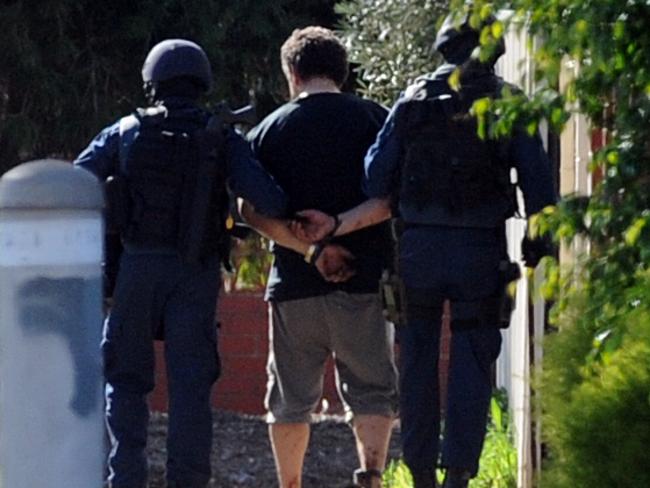
When police went to search a Falanga property in SA in July 2011 he refused to allow them access and fired off four shots from a .38 calibre handgun.
Police eventually got into the property and found Falanga’s meth lab.
JOHN HIGGS, 68, formerly of Belair Court, Taylors Lakes.


Nickname: “Teeth” (because he has bad ones).
Found guilty of conspiracy to import the 4.4 tonnes of ecstasy into Melbourne.
Jailed for 18 years and ordered to serve a minimum of 14.
Higgs is a convicted killer and is the founding member of the Melbourne chapter of the Black Uhlans bikie gang.
He was one of three major criminals who organised and paid corrupt police to carry out the burglary of the Victoria Police drug squad office in St Kilda Rd in 1996.
The burglary was committed to steal documents which would identify the key prosecution witness against Higgs, who was in witness protection and codenamed E2/92.
It happened shortly before E2/92, whose identity is still suppressed, was due to give evidence against Higgs.
Police believe Higgs organised the drug squad burglary so E2/92 could be identified, tracked down and executed before he could testify.
Former homicide squad boss Peter Halloran rang E2/92 in Europe immediately after the burglary and warned him he should change addresses quickly as “the crooks know who you are and where you live”.
Despite that attempt on his life, E2/92 returned to Melbourne and bravely gave evidence against Higgs and six other major criminals.
Higgs ran Australia’s biggest amphetamine gang for years until Victoria Police caught him in 1994 with seven tonnes of chemicals capable of making 226kg of illegal drugs worth more than $400 million.

He was jailed in 1999 for just six years, with a minimum of four, over that and got straight back into major drug dealing on his release.
Higgs was recruited into Barbaro’s gang because of his corrupt painter and docker contacts on the wharves and his strong links to the bikie gangs. Bikies would have become major buyers of some of the 15 million ecstasy tablets if they hadn’t been seized.
AFP surveillance officers watched as Higgs held meetings with senior members of the Hells Angels as well as Comancheros bikie Mohammed Oueida.
Oueida was later jailed for drug trafficking.
The AFP discovered Oueida had his own plane, $6 million in a Swiss bank account and a $2.8 million fortified property in Greenvale, which came with its own golf course.
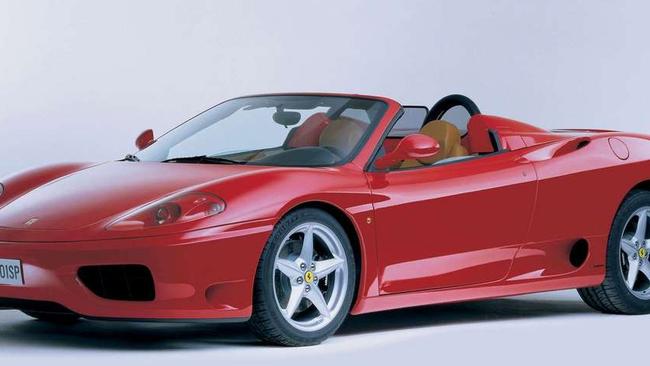
Higgs wasn’t fully trusted by Barbaro and other Calabrian mafia gang members because of his fondness for sampling the illegal drugs he was supposed to be selling and his rampant sex life, often with young prostitutes.
Senior Barbaro gang member Jan Visser was secretly taped by the AFP telling Barbaro’s cousin Zirilli about Higgs: “He is the way he is. We have to accept the way he is and now and again the speed and the ice is just a little bit too much for him. He f…ing hallucinates and he sees things and has 24-year-old girlfriends and stuff like that.”
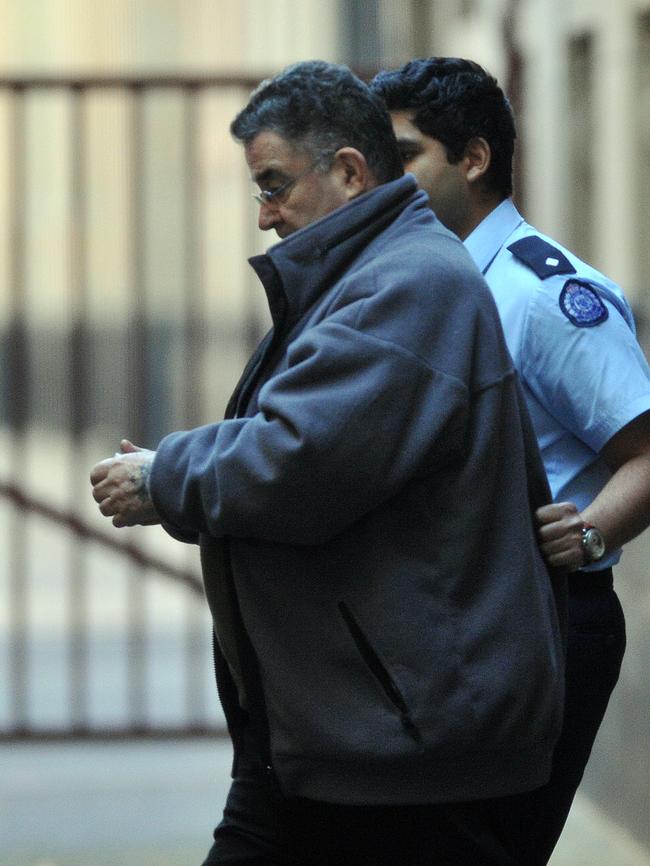
The Barbaro gang members put up with Higgs and his dangerous drug and sex habits because he had the contacts they needed to get drugs off the docks and was closely connected to Karam.
Karam’s dealings with Barbaro were initially all through Higgs as Karam wanted to stay as hands off as possible to avoid detection.
Higgs’s life of crime started at an early age. He left school at the end of Year 7 and got the first of his many adult convictions at the age of 20 in 1966.
He married at the age of 17 to a 16-year-old.
Two children from that marriage died in tragic circumstances. Higgs’s eldest son Craig was murdered in 1999 while his second son died of AIDS at the age of 30 in 1996.
Higgs’s marriage ended in 1970 after he was jailed for 12 years for manslaughter, although he got out in less than nine.
He started another relationship soon after being released and fathered another two sons before that relationship also ended.
At the time of his sentencing in 2013 he was in a relationship with a woman less than half his age. He fathered a child with her in 2011 when he was aged 64.
JAN VISSER, 64, of no fixed abode, having been on the run as a prison escapee at the time of his arrest.
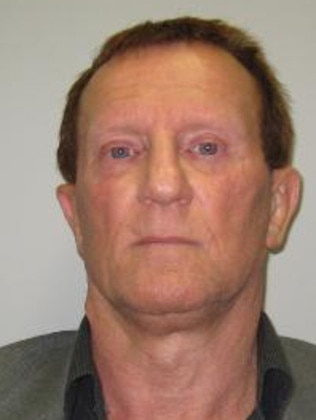
Found guilty of conspiring to import the 4.4 tonnes of ecstasy into Melbourne. Sentenced to 11 years and ordered to serve a minimum of 8.
Visser was born in the Netherlands, but came to live in Australia in 1961 at the age of 10.
A career criminal and father of six who was a close associate of Barbaro and Zirilli. He was there to do whatever Barbaro and Zirilli wanted in relation to receiving the 15 million pills and distributing them.
Visser described his role to Barbaro gang members as a fixer, a resource on hand and available to others should they need him to salvage their criminal venture, which was foundering and at risk of failure.
He was secretly taped telling gang member Pasquale Sergi his role in the gang was that of a “tugboat”, getting the salvage team ready.
AFP bugs caught him bragging that he would “run an armed team” onto the docks and get a corrupt crane driver to lift the container of pills onto the back of a truck.
Visser was a prison escapee and on the run from police in NSW at the time he was working with Barbaro on the 4.4 tonne ecstasy importation. He escaped from the court cells while waiting to appear on drug charges.
Visser escaped by pretending to be another prisoner who was due to be released on bail.
That prisoner was asleep in the same cell as Visser in April 2007 when a prison officer came in and asked which of them was due out on bail. Visser seized the opportunity to assume the other prisoner’s identity and walked free.
He fled to Melbourne and immediately started working for Barbaro, who he had done jail time with in the past.
Barbaro got Visser a fake passport later in 2007 so Visser could flee back to the Netherlands, where he was born, to avoid capture.
He was arrested in May 2008 when he flew into Melbourne and was immediately extradited back to NSW in relation to the outstanding drug matters and escaping custody.
Visser thought he was home free when he was granted parole in August 2012 after serving just over four years on the NSW drug and escaping charges.
What he didn’t know was the AFP had been waiting for his release so they could charge him over the world’s biggest ecstasy bust. AFP agents grabbed him as he walked out of jail and told him he was being extradited to Melbourne, where he stood trial in April 2014 and was found guilty.
His long and violent criminal history includes a 1984 conviction for two counts of causing grievous bodily harm with intent to murder, three counts of maliciously causing grievous bodily harm by explosion and one count of threatening to use an offensive weapon to try to avoid arrest.
Visser was jailed for life over those charges, but appealed and eventually got a minimum term of 13 years and six months.
SALVATORE AGRESTA, 47, Prospect Drive, Keilor East.
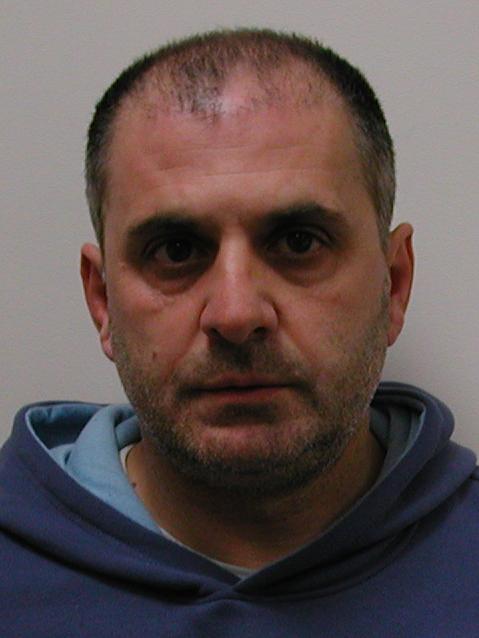
Nickname: “Sam” (anglicized version of his first name), “Sandwich” (because he made them at his cafe).
Found guilty of conspiracy to import the 4.4 tonnes of ecstasy and pleaded guilty to trafficking in a commercial quantity of ecstasy. Jailed for 12 years over the conspiracy and 10 years for trafficking — ordered to serve a minimum of 11 years.
Owner of the Ascot Pasta and Deli Café in Union Rd, Ascot Vale, where underworld figure Des ‘Tuppence’ Moran was executed in June 2009.
Agresta — who was out on bail at the time over the world’s biggest ecstasy bust charges — and his wife were in their deli when Moran was shot dead. They watched in horror as a masked gunman pumped seven rounds into Moran in the doorway of what was his favourite cafe.
Former Rebels bikie gang president Geoffrey ‘Nuts’ Armour was convicted of murdering Moran in a plot instigated by Moran’s sister-in-law, Judy Moran, who was also convicted over the murder.
Agresta used to work for major freight handler Patricks and was a close associate of Barbaro and Zirilli, who brought him in after the 4.4 tonne shipment of ecstasy arrived in the hope he could use his corrupt shipping industry contacts to help obtain access to the container.
Also sold almost 120,000 ecstasy pills for the Barbaro syndicate. Was trusted enough by Barbaro that he received the pills on credit and only had to pay Barbaro back once he had sold the pills.
Agresta stored large quantities of ecstasy pills at his elderly father’s house for the Barbaro syndicate.
Has prior convictions for possession and use of weapons, property damage, assaults, resisting arrest, hindering police and possession and use of cocaine.
SHARON ROPA, 44, formerly of Little Palmerston St, Carlton.
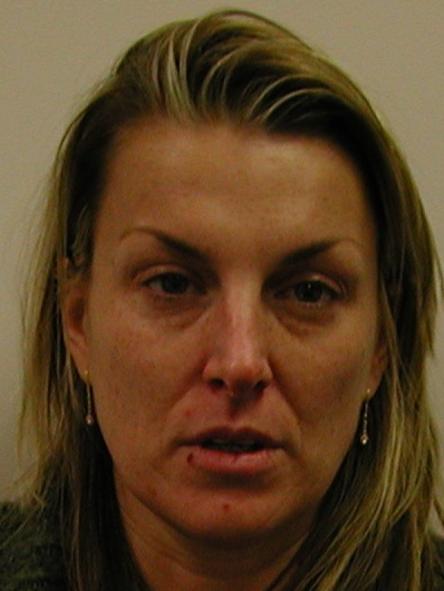
Nickname: “Blondie” (because she was).
Pleaded guilty to trafficking in a commercial quantity of ecstasy, dealing with $1 million or more of the proceeds of crime and possession of property reasonably suspected to be the proceeds of crime.
Jailed for nine years and 6 months and ordered to serve a minimum of seven.
Was Barbaro’s Melbourne mistress and was naked in bed with Barbaro when the AFP raided their Carlton love nest at 4am on August 8, 2008.
Barbaro got to know Ropa after he did jail time with Ropa’s former partner. He promised Ropa’s ex he would look after Ropa when he got out.
Ropa kept meticulous records of who in Barbaro’s gang had been provided with what amount of drugs and how much each trafficker had paid Barbaro and owed Barbaro.
The AFP seized those records during the raid on the Carlton apartment Ropa rented for her and Barbaro and used the records as evidence in the trials of those charged over the world’s biggest ecstasy bust and other drug offences involving the Barbaro syndicate
It was Ropa who took bags of cash to Melbourne money launderers to send to the European gang that shipped the 4.4 tonnes of ecstasy from Italy.
She was clearly part of Barbaro’s inner circle and was present during many secretly taped conversations in which Barbaro discussed and organised large scale drug dealing with associates.
Consultant psychiatrist Dr Jeanette Moir gave evidence at Ropa’s court case that she had been treating Ropa for depression since before Ropa’s arrest in August 2008.
Dr Moir said Ropa had been in abusive relationships with a number of men, but that Barbaro had not been physically abusive towards her.
Ropa told Dr Moir she respected Barbaro and the males associated with him and described her relationship with Barbaro as being “putty in his hands”.
Dr Moir said Ropa’s ongoing focus in life “was to have a male to be with, no matter what the personal cost”.
Forensic psychologist Jeffrey Cummins provided a report during Ropa’s court case which revealed that Ropa told him she was also in a sexual relationship with Alan Saric, one of the drug dealers she was supplying ecstasy to.
Consultant psychiatrist Dr Danny Sullivan gave evidence during Ropa’s court case about his dealings with Ropa.
Dr Sullivan said Ropa was enthralled by Barbaro during the time she and he were drug dealing and that she had a dependent personality style.
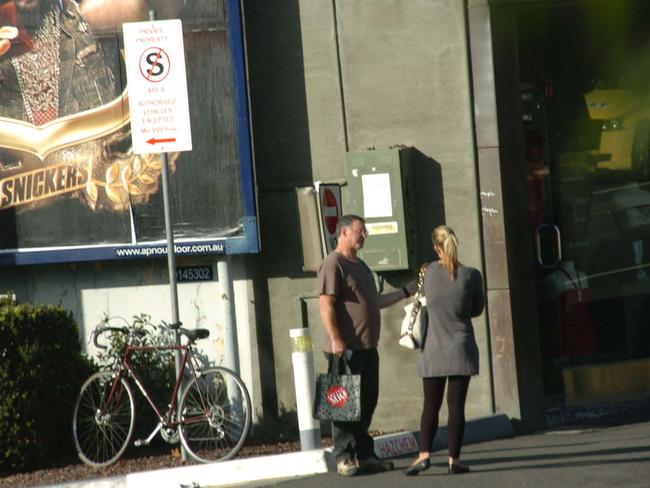
“Her behaviour at the time was not so much that she was impressed with the importance of her position in this enterprise, but rather she was more impressed with the regard in which she considered Mr Barbaro held her as a consequence of her behaviours,” Dr Sullivan said.
“So in that sense, I would describe her as beholden, in the sense that she would do anything for him to gain his respect, his adulation, his admiration or his ongoing company.
“The reason I think she was able to continue engaging in such behaviour so continually was because of her desire to please Mr Barbaro.”
Prosecutor Brent Young said: “The evidence clearly reveals that Ms Ropa was obviously emotionally infatuated with Barbaro. She wanted to establish better her worth for him to gain his favour and to thereby inspire his affection.”
County Court sentencing Judge James Montgomery told the court that after Barbaro was arrested and remanded in custody he “sent” a man to Ropa, who was out on bail at the time.
The judge said Ropa formed a relationship with that man and it turned into a violent one as he “attempted to place pressure on you”.
“It was put by your counsel that you have had an unfortunate history in your choice of male partners,” Justice Montgomery told Ropa when he jailed her.
“I cannot but agree.”
While Ropa obviously idolised Barbaro, he demonstrated in conversations recorded by the AFP that he didn’t have much respect for her and considered her to be a sexual plaything that would also cook and clean for him.
Barbaro was on the phone on May 30, 2008, arranging for gang member Agresta to meet Ropa, saying he would have to “meet the bitch later”.
In a bugged conversation with Melbourne Calabrian mafia heavy Francesco Madafferi on July 1, 2008, Barbaro sneeringly referred to Ropa as “the tart”.
Ropa and Zirilli were secretly taped by the AFP on May 14, 2008, as they discussed the role of women in the Calabrian mafia.
Ropa said: “Is that what I am, a mafia moll?”
Zirilli replied: “Nah, get f…ed, you’re a mafia secretary.”
PASQUALE SERGI, 51, formerly of North Grove Drive, Griffith.
Nicknames: “Poppy” and “Fatso” (because he was).
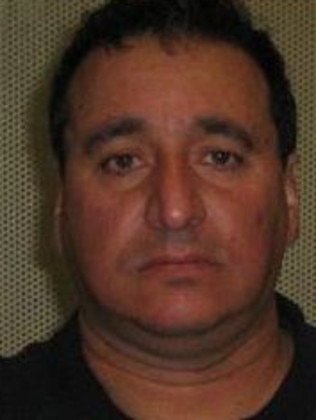
Found guilty of conspiring to import the 4.4 tonnes of ecstasy and pleaded guilty to trafficking a commercial quantity of ecstasy.
Jailed for 16 years and ordered to serve a minimum of eight years and three months.
Griffith-based and a cousin of Calabrian mafia boss Pasquale Barbaro.
Described in court as one of Barbaro’s foot soldiers, willing and waiting to do whatever Barbaro asked.
Airline and Immigration records show Sergi was in Italy in May 2007 when the shipping container containing the 4.4 tonnes of ecstasy was loaded in Naples.
Police suspect Barbaro sent him there to supervise the loading of the 15 million pills onto the MV Monica for the voyage to Melbourne.
Sergi was a regular visitor to the Melbourne apartment Barbaro shared with his lover Sharon Ropa and was secretly recorded taking part in drug dealing discussions with Barbaro, Ropa and other gang members.
It was Sergi who Barbaro got to dig a hole in the love nest’s garden to hide, drugs, guns and money in.
The married father of four was sleeping in Barbaro and Ropa’s apartment when the AFP raided it to make arrests in August 2008.
Sentencing judge Felicity Hampel said she was satisfied Sergi was aware of Barbaro’s drug dealing and was prepared to assist Barbaro with whatever he needed.
“You were present when discussions took place about supply generally, about prices, about collection of money and return of broken tablets for re-pressing,” Justice Hampel told Sergi.
“You knew where money and drugs were stored and concealed, who the customers were and how some of the supplies to customers were arranged.
“You may have been an underling, but you were an enthusiastic and willing participant in the enterprise.”
DOMENICO BARBARO, 47, formerly of Todd Rd, Lake Wyangan, near Griffith, NSW.

Nickname: “Bubble” (as a result of how he used to pronounce his surname when he was a child).
Pleaded guilty to trafficking in a commercial quantity of ecstasy.
Jailed for seven years and ordered to serve a minimum of five.
Another of gang boss Pasquale Barbaro’s cousins.
His father is a convicted drug grower and evidence was given during the case that Domenico Barbaro admitted his father lost his leg after being shot over a dispute relating to his marijuana growing.
Evidence was given that Domenico Barbaro was a follower rather than a leader and that he felt an obligation to help his older cousin Pasquale Barbaro in the Barbaro drug syndicate.
GIOVANNI POLIMENI, 42, formerly of Wyanga Ave, Griffith.
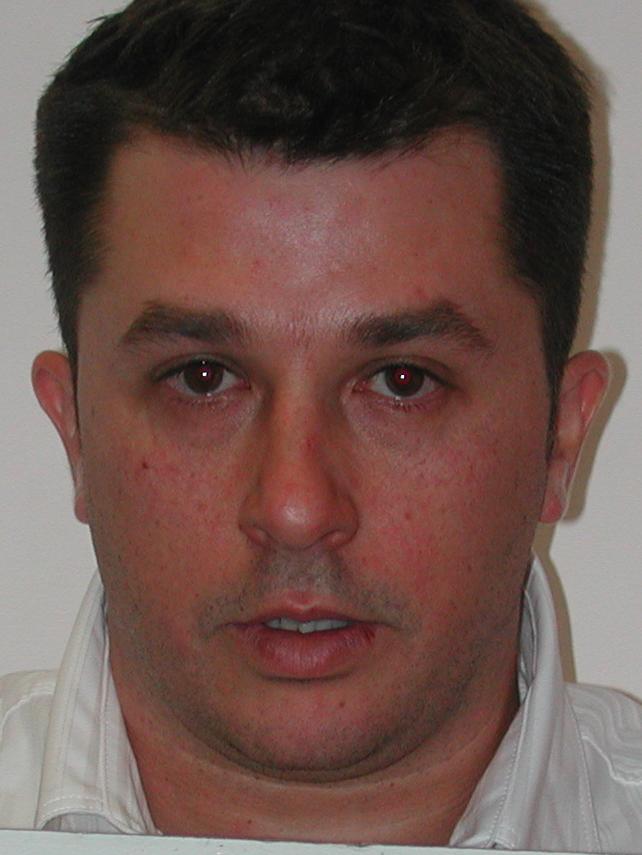
Pleaded guilty to aiding and abetting the importation of 150kg of cocaine. Jaioed for 18 years and ordered to serve a minimum of 12.
The Polimeni and Barbaro families of Griffith have been close for decades.
Sentencing judge James Montgomery outlined background provided by Polimeni’s lawyer.
“Barbaro was a very successful farmer in the Griffith area, indeed had a reputation for mediating disputes, which he did on a number of occasions for the Polimeni family, particularly in relation to a dispute with a Casella family, a well-known wine family at Griffith,” Justice Montgomery told Polimeni during his County Court sentencing hearing.
“This led to Mr Shaw (Polimeni’s lawyer) to make his second point, that the relationship with Barbaro arose out of the family ties between the two families and he told me that you felt a sense of gratitude and obligation to Barbaro.”
Polimeni was senior enough in Barbaro’s Calabrian mafia cell to be trusted to travel, at Barbaro’s expense, to Europe to meet the European drug trafficking syndicate which was supplying Barbaro with ecstasy and cocaine. Polimeni travelled with Barbaro’s cousin Saverio Zirilli in March 2008 to negotiate with the Europeans.
Polimeni also travelled with Zirilli from Griffith to Melbourne on the date of the arrival of the container containing the 150kg of cocaine. He remained in Melbourne until it was realised that all hope of obtaining safe possession of the cocaine was gone as it had been seized by the AFP.
Polimeni was secretly taped by police as he explained to other gang members exactly how the cocaine had been packed in the container.
PHILLIP BATTICCIOTTO, 53, formerly of Bugden Ave, Fadden, ACT.
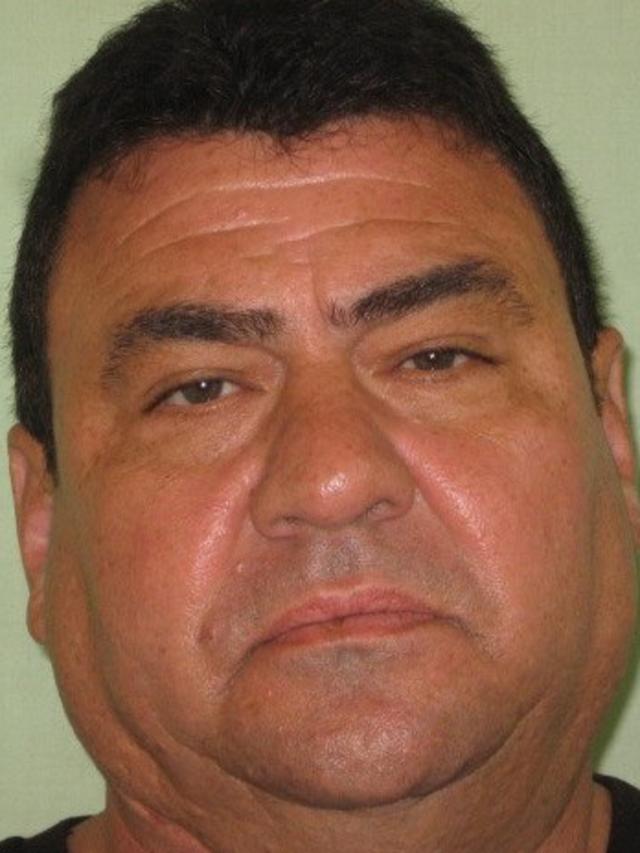
Found guilty of conspiracy to import 100kg of precursor chemicals to make amphetamines.
Jailed for 10 years and ordered to serve a minimum of seven.
Went to school at St Joseph’s primary in Collingwood during seven years spent in Melbourne, where his father ran a butcher shop.
Became a butcher himself and ran the family wholesale meat business in Canberra since 1996.
Married to Pasquale Barbaro’s cousin and has four children.
Barbaro was recorded by the AFP telling Batticciotto he was planning to open a Tepanyaki-style Japanese restaurant in Griffith and suggested to Batticciotto that he become a partner in it, which Batticciotto enthusiastically agreed to.
SEVERINO SCARPONI, 45, formerly of Allinga Ave, Glenside, South Australia.

Pleaded guilty to trafficking in a commercial quantity of ecstasy, conspiring to import a commercial quantity of drug-making chemicals and possessing the proceeds of crime.
Jailed for nine years and ordered to serve a minimum of six.
His lawyer told the court he was “in awe” of Barbaro and even though Scarponi knew Barbaro was a dangerous man he came to admire him and was happy to deal drugs for him.
Scarponi, the owner of an Adelaide trucking company, was used by Barbaro to arrange transportation of almost 500,000 ecstasy tablets from Sydney to Melbourne.
He was also going to be used to transport the 150kg shipment of cocaine to Griffith if it hadn’t been seized by the AFP.
GRATIAN BRAN, 57, formerly of Mernda Ave, Cheltenham.
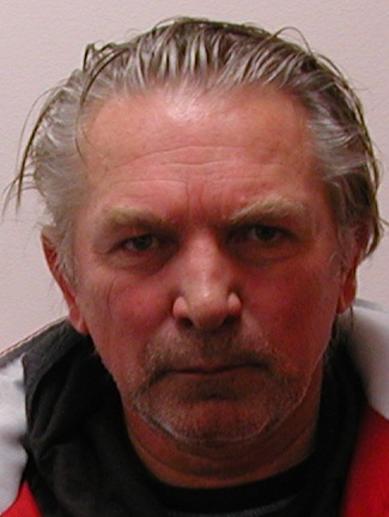
Pleaded guilty to trafficking in a commercial quantity of ecstasy.
Jailed for seven years and ordered to serve a minimum of five.
Mr X, who can’t be identified but who is a senior member of the European gang which supplied the 4.4 tonnes of ecstasy, got Bran involved in drug dealing.
Bran served time in a Romanian jail for trying to escape from military service.
He knew Mr X in Europe through working for his family export business.
Bran contacted Mr X in Europe from Melbourne in 2007, seeking help from Mr X to export wine to Europe from Australia.
Bran’s lawyers claimed he only got involved in drug dealing so Mr X would help him with his wine exporting business.
Sentencing judge James Montgomery said Bran was involved in trafficking 20,000 ecstasy tablets and the money laundering of at least $1.94 million, knowing it was money from the proceeds of crime.
Ecstasy gang leader Pasquale Barbaro was caught on tape by police as he explained to Bran how foolish drug boss Tony Mokbel was to have got caught on the run in Greece.
Barbaro claimed to Bran that he had a number of friends who had successfully evaded police by fleeing overseas and lying low.
A listening device in Barbaro’s Carlton apartment recorded him talking to Bran after the pair had just watched a news report about Mokbel’s capture in Greece.
Barbaro told Bran Mokbel was “stupid” and a “goose” and that he should have gone to Lebanon rather than sitting on the beach in Greece.
“Go to the f…ing mountains of Lebanon,” Barbaro told Bran.
“Live like a king, mate they drink champagne and eat f…ing fish all day.
“They’ve got things underground, five star houses over there underground.
“What’s money? I would rather be poor and be free than a millionaire and be in jail, f..k that.”
Bran himself was taped by the AFP in a conversation with Barbaro in which Bran offered to send some heavy debt collectors he knew to punish Rob Karam over money Karam owed the Barbaro gang.
Barbaro replied saying he had told Karam he would pay at the end of the day “either in money, or with his life”.
ANTONIO DI PIETRO, 48, formerly of Pound Rd, Narre Warren.
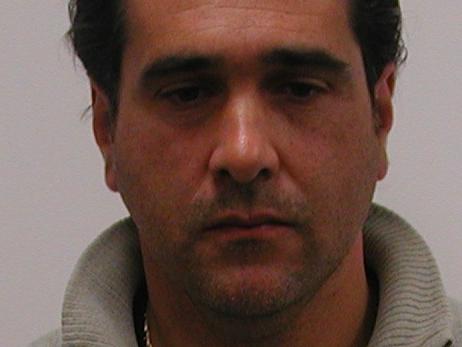
Nickname: “Truck” (because he worked at transport company) and “Elvis” (as a result of his slicked back hair).
Pleaded guilty to trafficking in a commercial quantity of ecstasy.
Jailed for seven years and ordered to serve a minimum of four years and six months.
Long term associate of gang boss Pasquale Barbaro. Acted as an intermediary between Barbaro and Frank Madafferi as he knew them both.
PINO VARALLO, 46, formerly of Mount Pleasant Rd, Eltham.
Nickname: Tiles (because he laid them).

Pleaded guilty to trafficking in a commercial quantity of ecstasy.
Jailed for eight years and six months and ordered to serve a minimum of five years.
His lawyer claimed he met Barbaro through doing a large tiling job on Barbaro’s brother’s house in Griffith and that Barbaro told him he could make a lot of money if he sold ecstasy pills in Melbourne for him.
Sentencing judge James Montgomery told Varallo drug users relied on people being prepared to sell to them.
“You entered into your association with Mr Barbaro for a profit,” Justice Montgomery said.
“You were a businessman in difficult financial circumstances who succumbed to the temptation of being involved in the drug trafficking world as a way to make a quick and easy profit to rescue your finances.”
ANIL SURI, 59, formerly of Clarendon St, Maidstone.

Convicted of conspiracy to import a commercial quantity of precursor chemicals to make amphetamines.
Jailed for 11 years and initially ordered to serve a minimum of nine years. His minimum term was dropped to eight years on appeal.
His role was to source and then oversee the export of 100kg of chemicals from India to Melbourne to make ice.
As it turned out, Suri’s criminal contacts in India were not as good as the Barbaro gang thought as the gang in India shipped 100kg of useless chemicals in a classic drug rip off where buyers pay for one drug and get something different.
ALAN SARIC, 41, formerly of Conquest Drive, Werribee.

Pleaded guilty to trafficking in a commercial quantity of ecstasy.
Jailed for six years and ordered to serve a minimum of three years and six months.
Shared something apart from drug dealing with gang boss Pasquale Barbaro — they were both having sex with fellow syndicate member Sharon Ropa.
Sentencing judge James Montgomery outlined the background provided to the court by Saric’s lawyer.
“Prior to your involvement with Ms Ropa you were married, you were running a construction business,” Justice Montgomery told Saric.
“You became involved in a commercial job in Malvern. Halfway through the job, the developer’s money dried up.
“You had put your house up as collateral. The developer went into liquidation and you lost $130,000.
“You lost your house. This caused difficulties with your marriage.
“Your wife, at the time, was a lawyer with Slater and Gordon. Her income was not enough to support the financial difficulties that had occurred to you. There was a matrimonial dispute between the two of you.
“In 2008, you met Sharon Ropa. You had been drinking alcohol excessively.
“She introduced you to the drug world. You were selling the tablets to wholesalers and remitting the money back to Ms Ropa.
“You were involved with some 15,000 ecstasy tablets, supplied by Ms Ropa. You sold on to other wholesalers. You received $100,500 yourself as payment.”
FADL MAROUN, 33, lived at Raglan St, Preston.
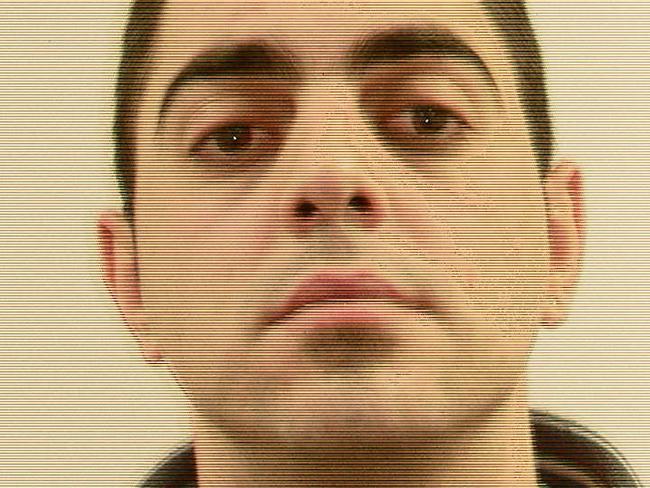
Pleaded guilty to trafficking in a commercial quantity of ecstasy. Not yet sentenced. Travelled to Hong Kong with Karam to try to buy 26 tonnes of chemicals to make ice. Along with Karam, was caught in an AFP sting during which he and Karam were secretly recorded as they were negotiating and committing drug deals with undercover police in Hong Kong and Melbourne.
FRANK MOLLUSO, 33, formerly of Menzies St, Braybrook.

Nickname: “Kitchen” (because he ran Creative Kitchens, which was used by the gang to store drugs).
Pleaded guilty to trafficking in a commercial quantity of ecstasy.
Jailed for eight years and ordered to serve a minimum of six years and six months.
Sentencing judge James Montgomery said Molluso’s drug dealing was of a serious nature.
“General deterrence is an important sentencing consideration for this type of offending,” Justice Montgomery told Molluso.
“That is, I must impose a sentence that will deter or try and stop other people committing similar offences.
“In this offending you were a willing participant in a serious drug trafficking operation.
“I understand you became involved through your association with Mr Tony Di Pietro.
“You were a young person influenced by a smarter, older, more cunning and persuasive friend of the family, but you still made your own decision to be involved.”
PAUL PSAILA, 44, of Seaver Grove, Reservoir.
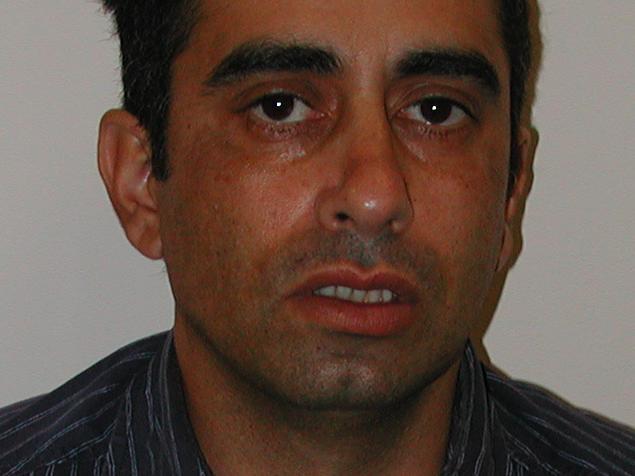
Pleaded guilty to trafficking a marketable quantity of ecstasy.
Jailed for four years and nine months and ordered to serve a minimum of two years and nine months.
Had prior convictions for dishonesty and heroin trafficking.
Heroin addict who met Pasquale Barbaro in prison in Queensland. Recruited by Barbaro to traffick ecstasy and handled thousands of pills.
AMREN JOSKUN, 53, of Harrow Rd, Auburn, NSW.
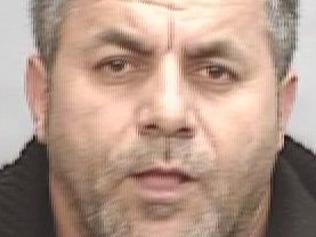
Pleaded guilty to trafficking ecstasy.
Jailed for 14 months and ordered to serve a minimum of six months.
Born in Turkey. Moved to Sydney in 1988. Moved to Griffith in 1999 to work as a fruit picker, met Pasquale Barbaro while doing so and became involved in drug trafficking for the Barbaro syndicate.
Used his own car to transport thousands of ecstasy pills for Barbaro.
KADIR DEMIR, 49, of Chestnut Rd, Auburn, NSW.
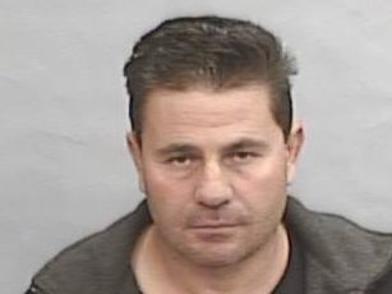
Pleaded guilty to trafficking a marketable quantity of ecstasy.
Jailed for two years and ordered to serve a minimum of 15 months.
Born in Turkey. Met Barbaro while working as a fruit picker in Griffith. Minor player who transported ecstasy from Sydney to Melbourne with co-accused Amren Joskun.
Provided advice to Barbara gang members on how best to transport pills by road to avoid being detected.
PASQUALE SERGI, 40, of McCarthy St, Fairfield West, NSW. (Pasquale Sergi from Griffith was also charged)
Minor player who was given a 12-month intensive correction order over his ecstasy trafficking for the Barbaro syndicate.
DANNY MOUSSA, 36, of McGowan St, Preston.
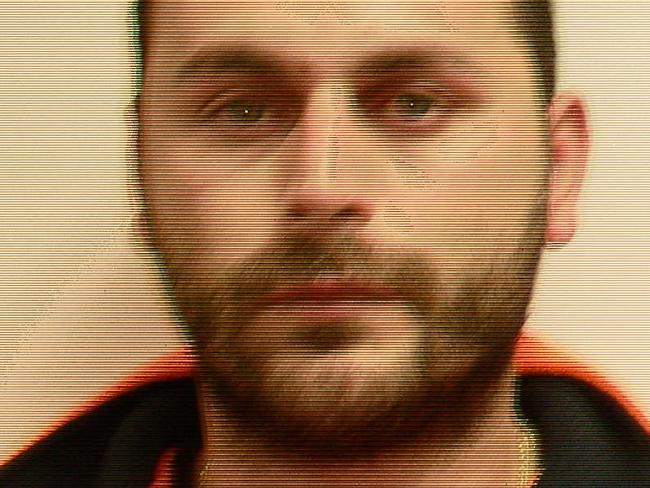
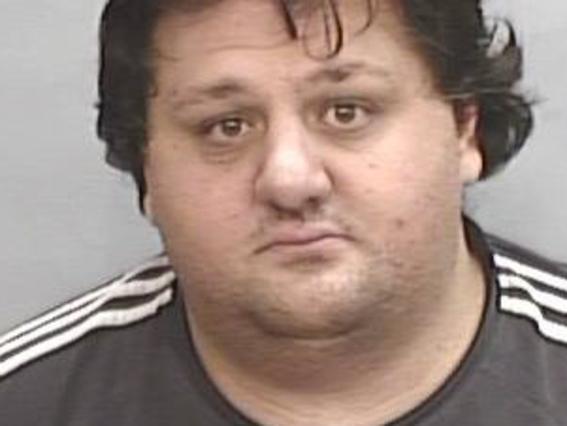
Pleaded guilty to trafficking ecstasy.
Given a four month suspended sentence and ordered to be of good behaviour for two years.
Minor player.
MONEY LAUNDERING
The AFP team investigating the Barbaro syndicate’s massive drug dealing also identified the Melbourne-based money laundering gang Barbaro used to get drug money to the European syndicate.
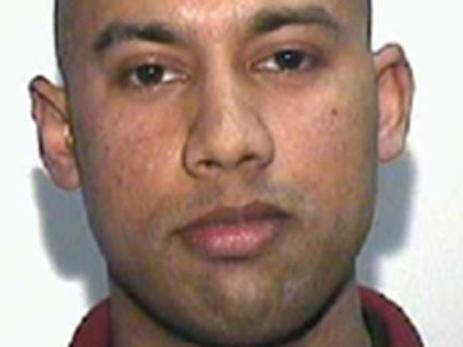
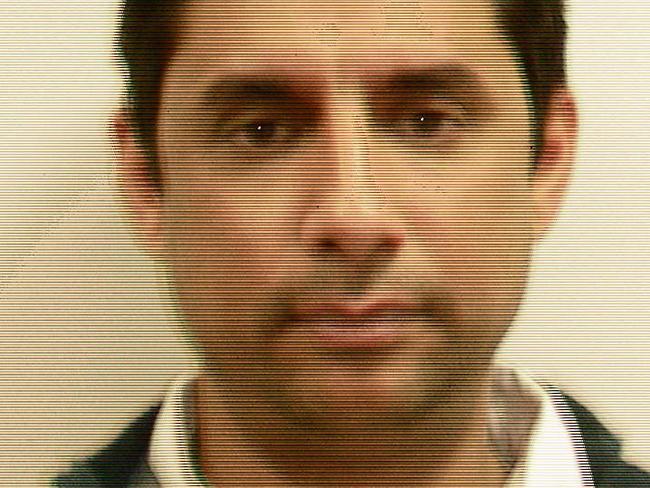
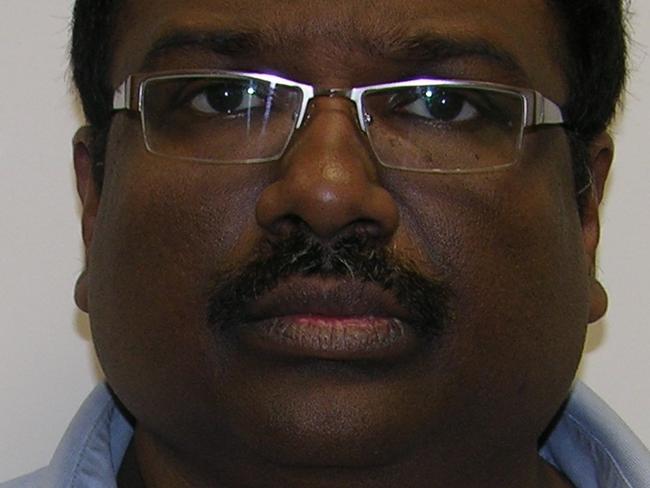

They charged five members of the money laundering syndicate and they were jailed for between two and seven years.
The five were Mohamed Thoufeeq Abdul Majeed, Anvardeen Abdul-Jabbar, Tanesh Dias, Seyed Moulana and Mohammed Nasfan Abdul Nazeer.
They laundered more than $11 million through Singapore for the Barbaro syndicate.

